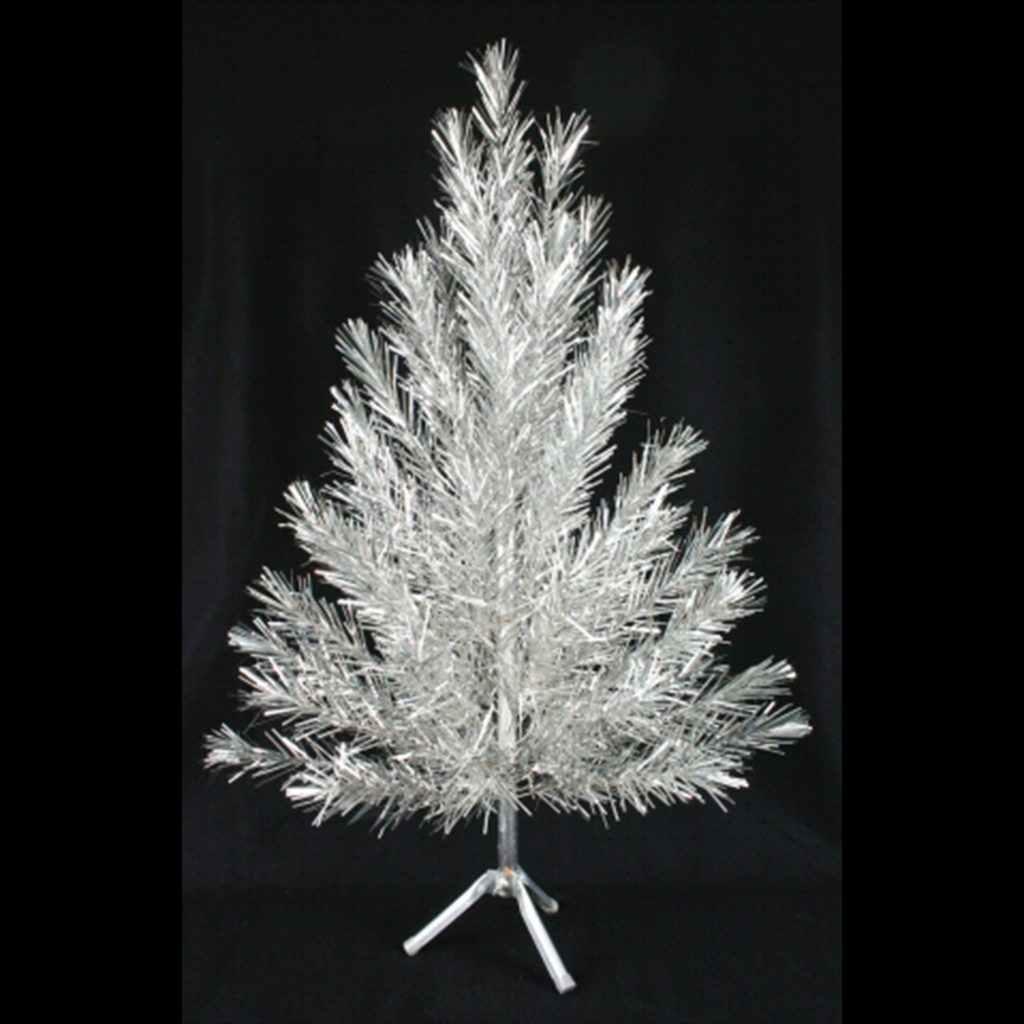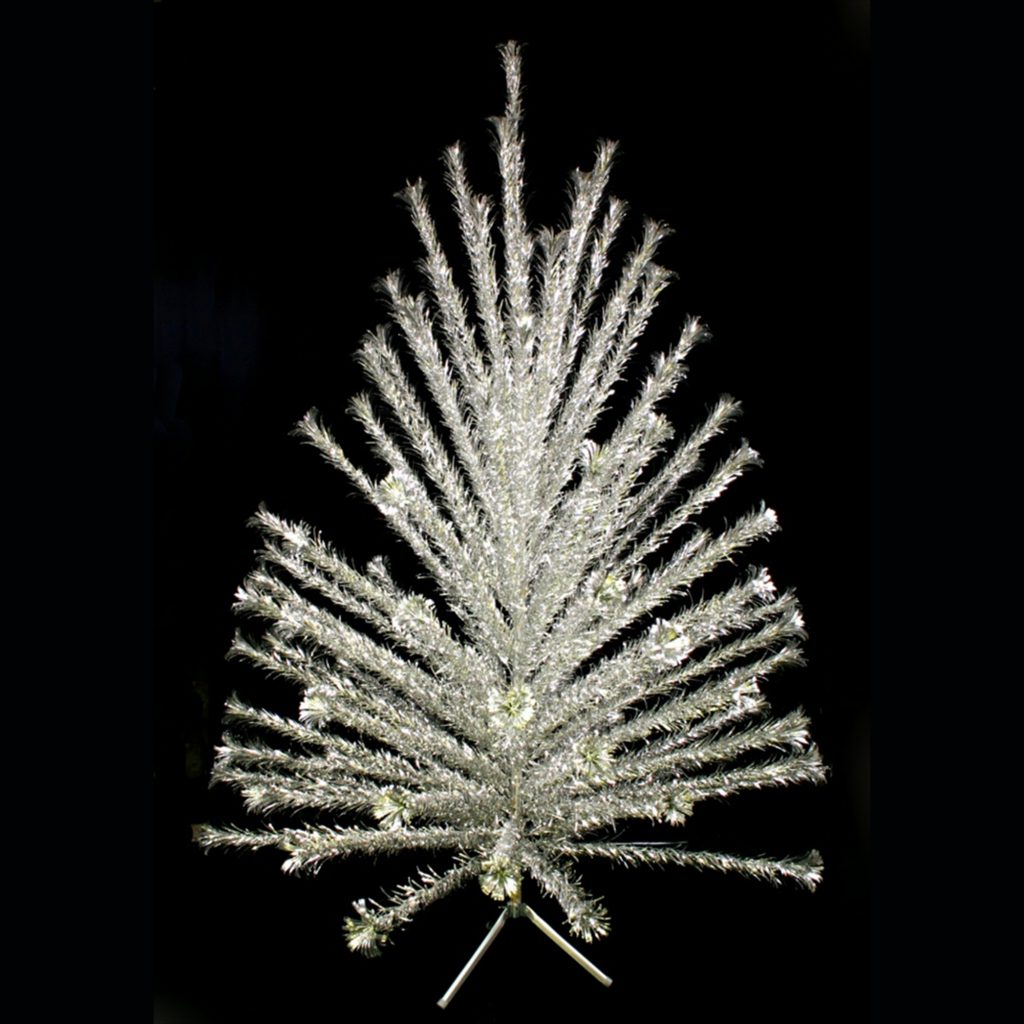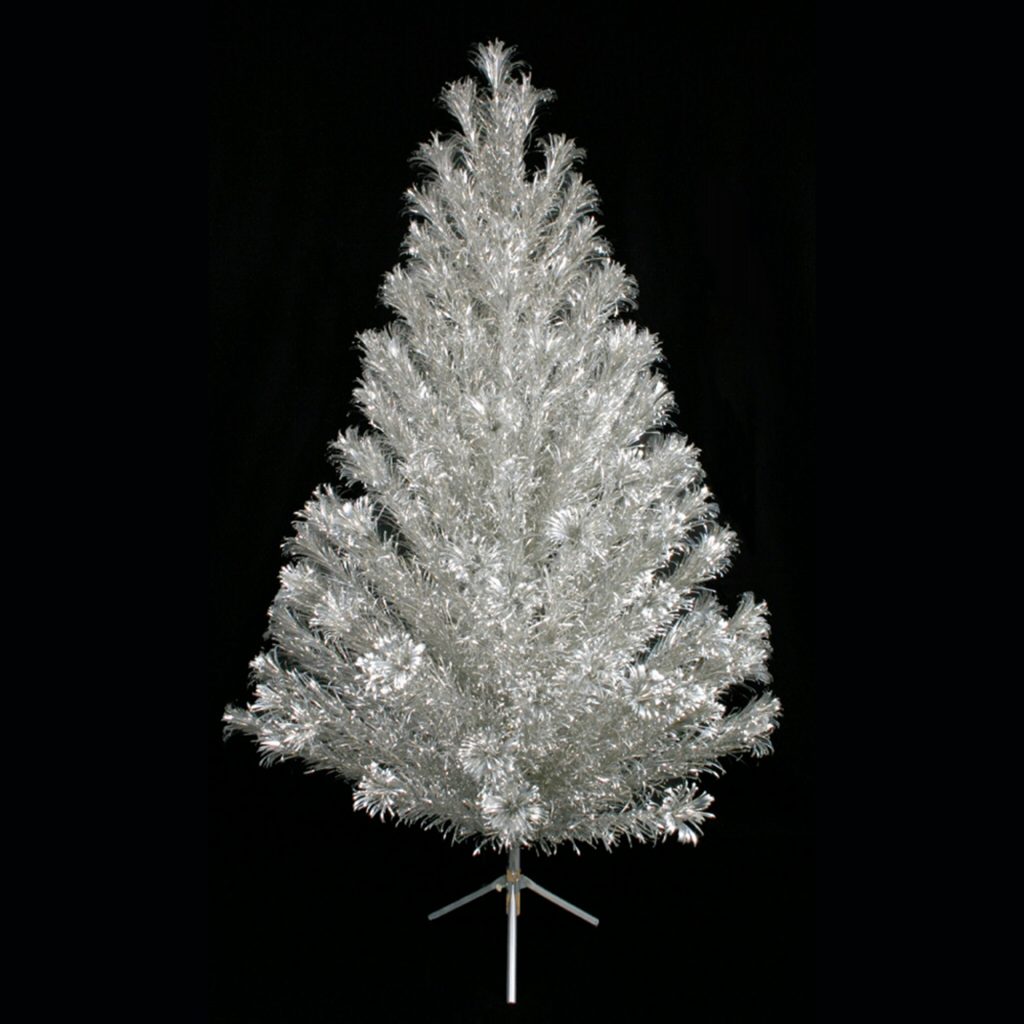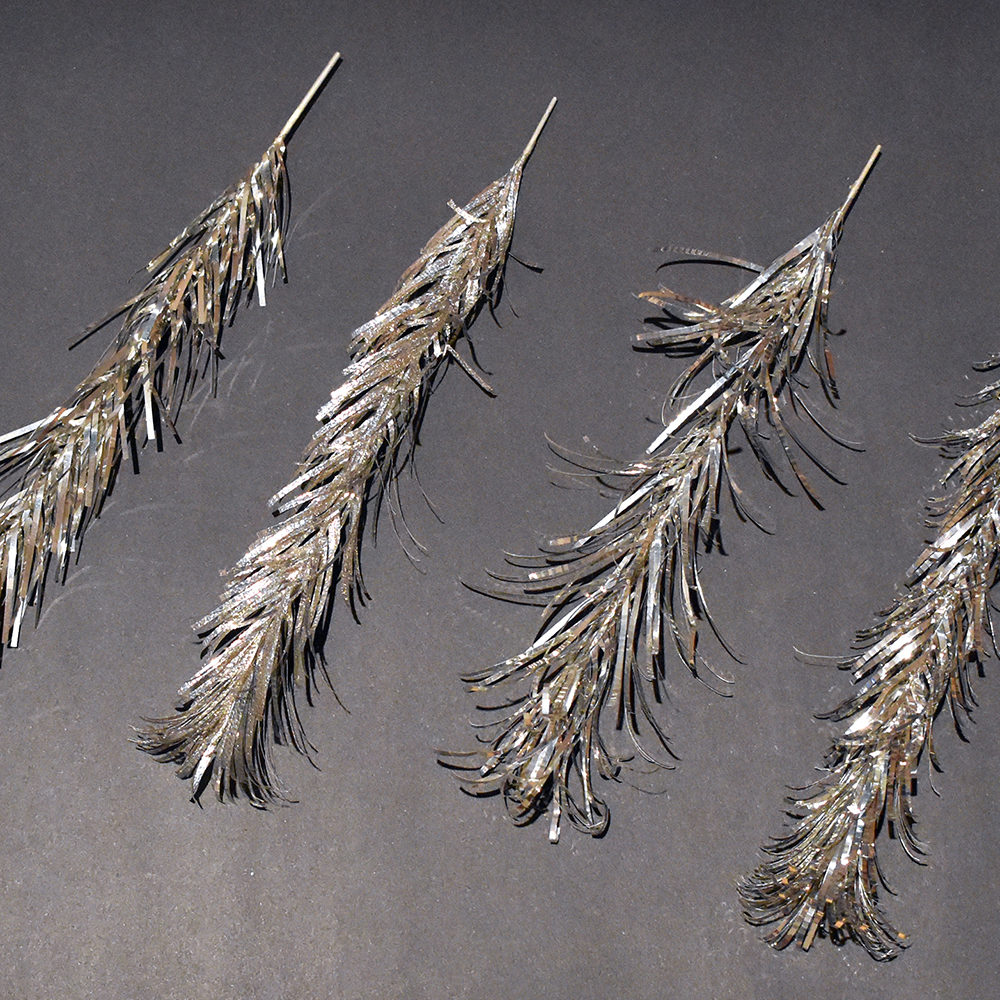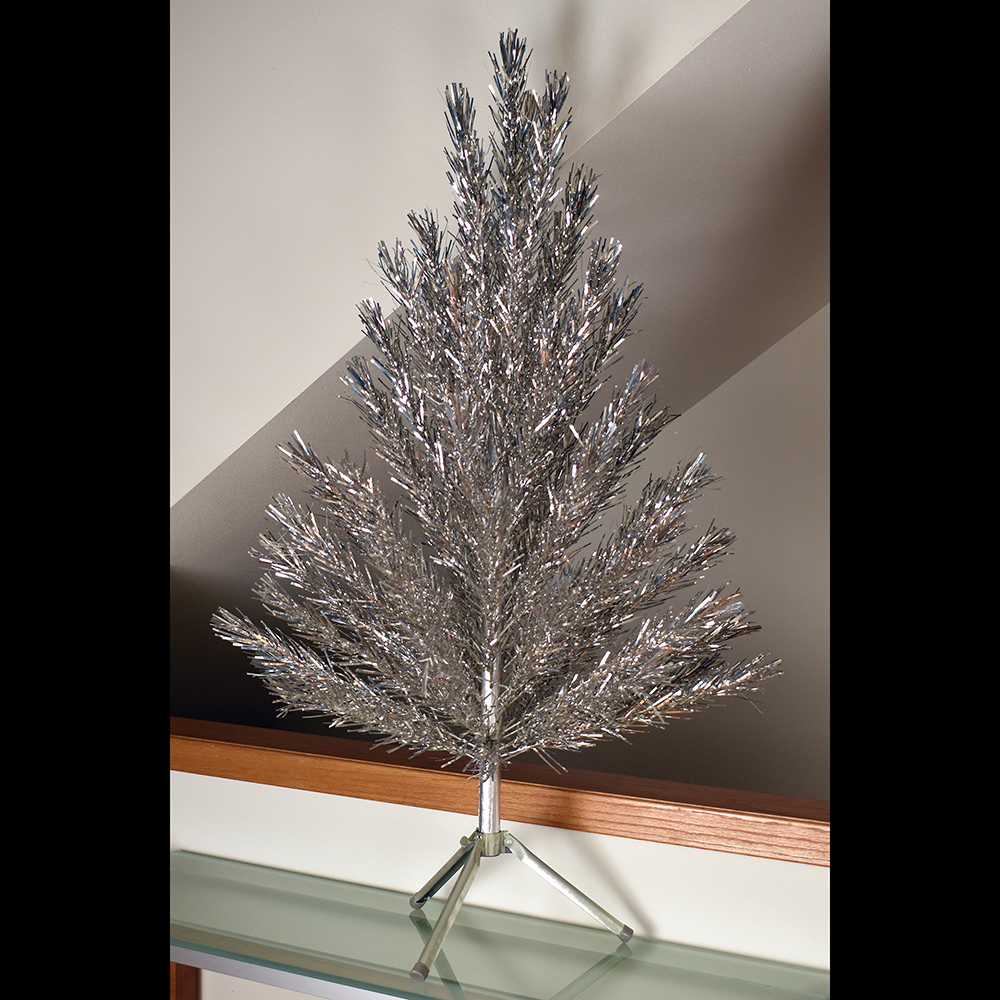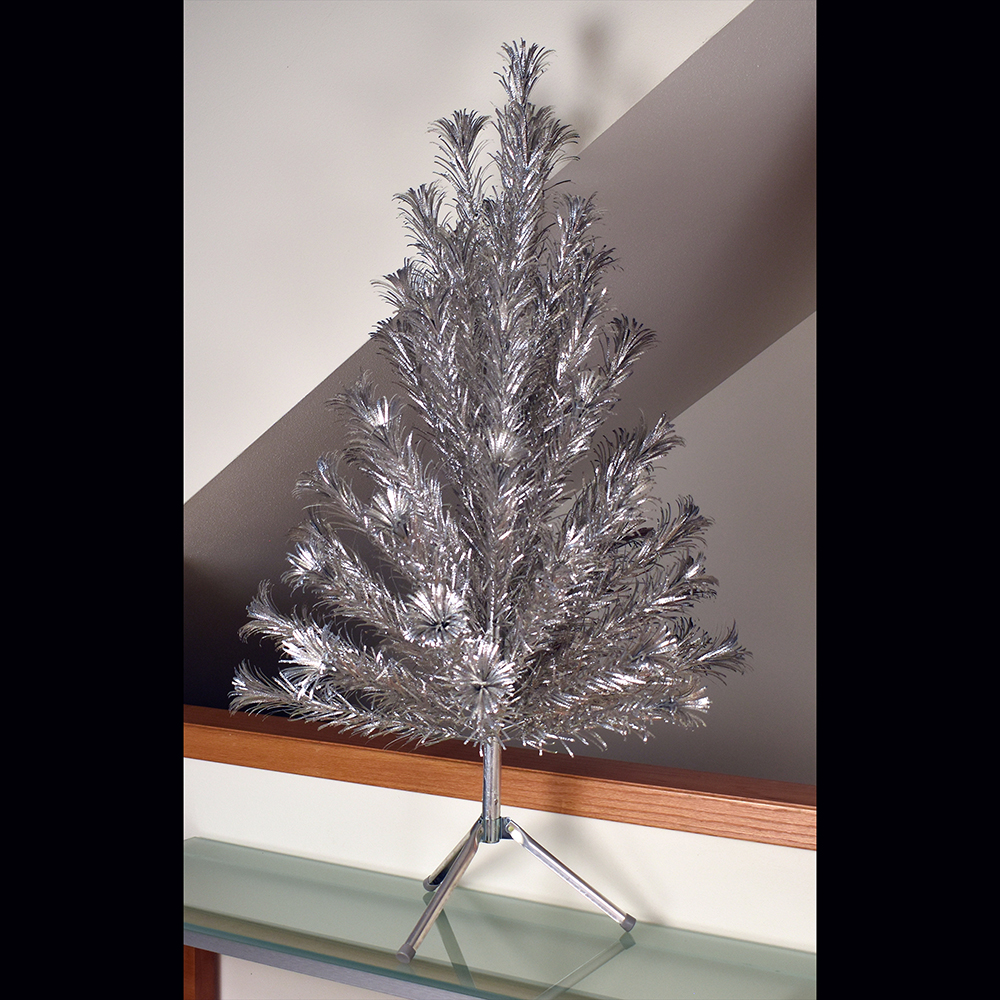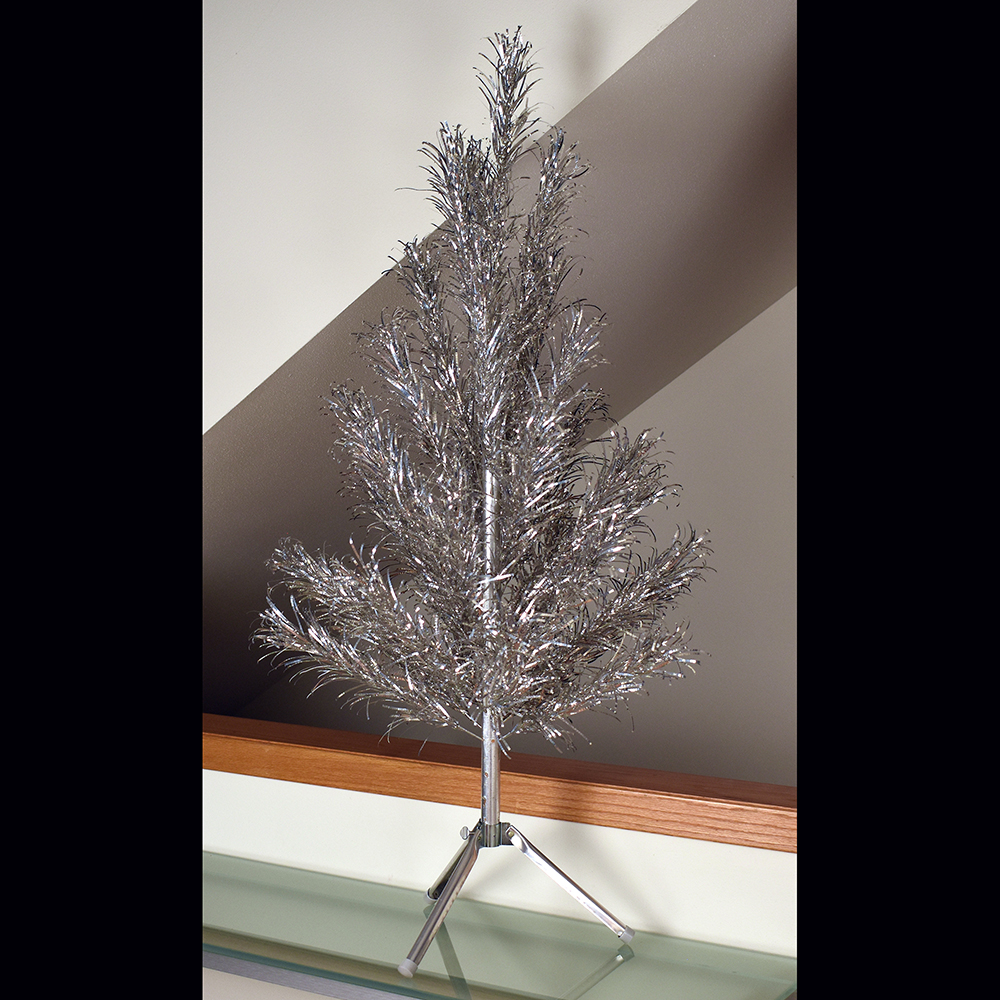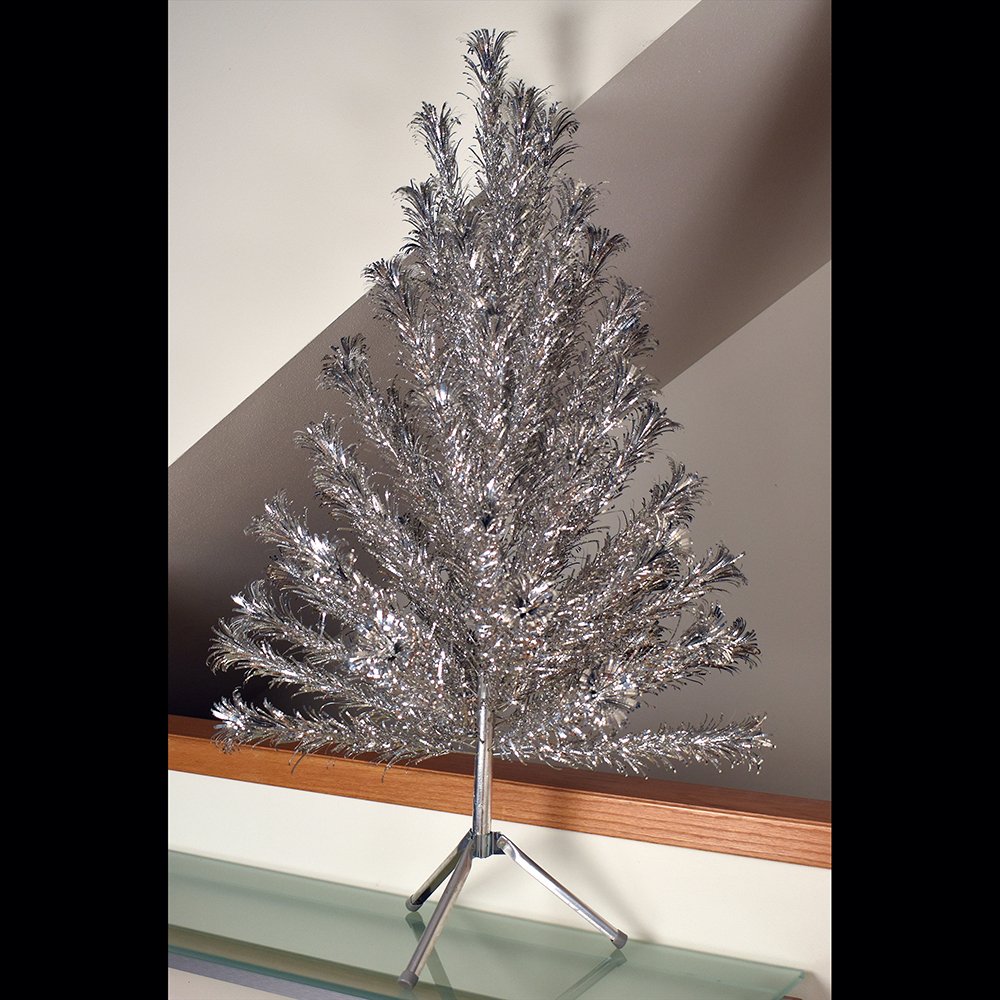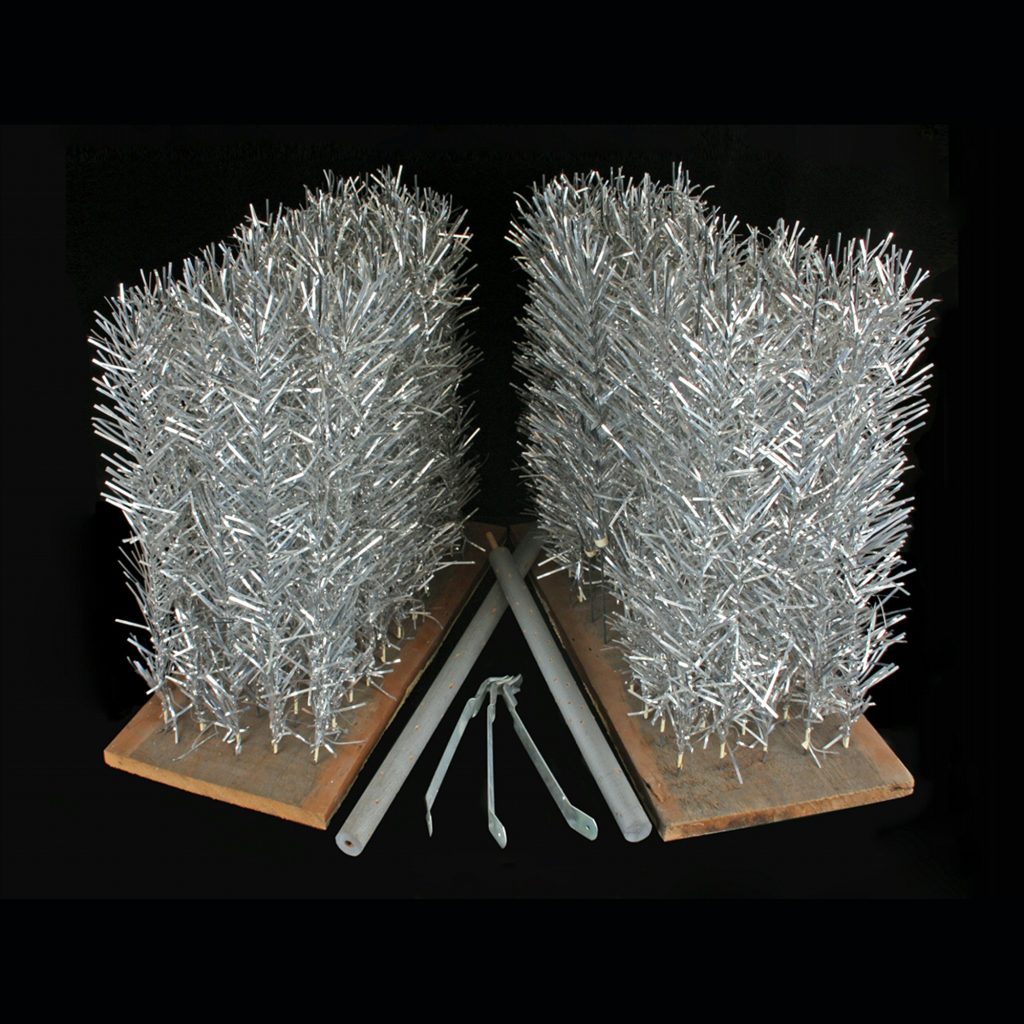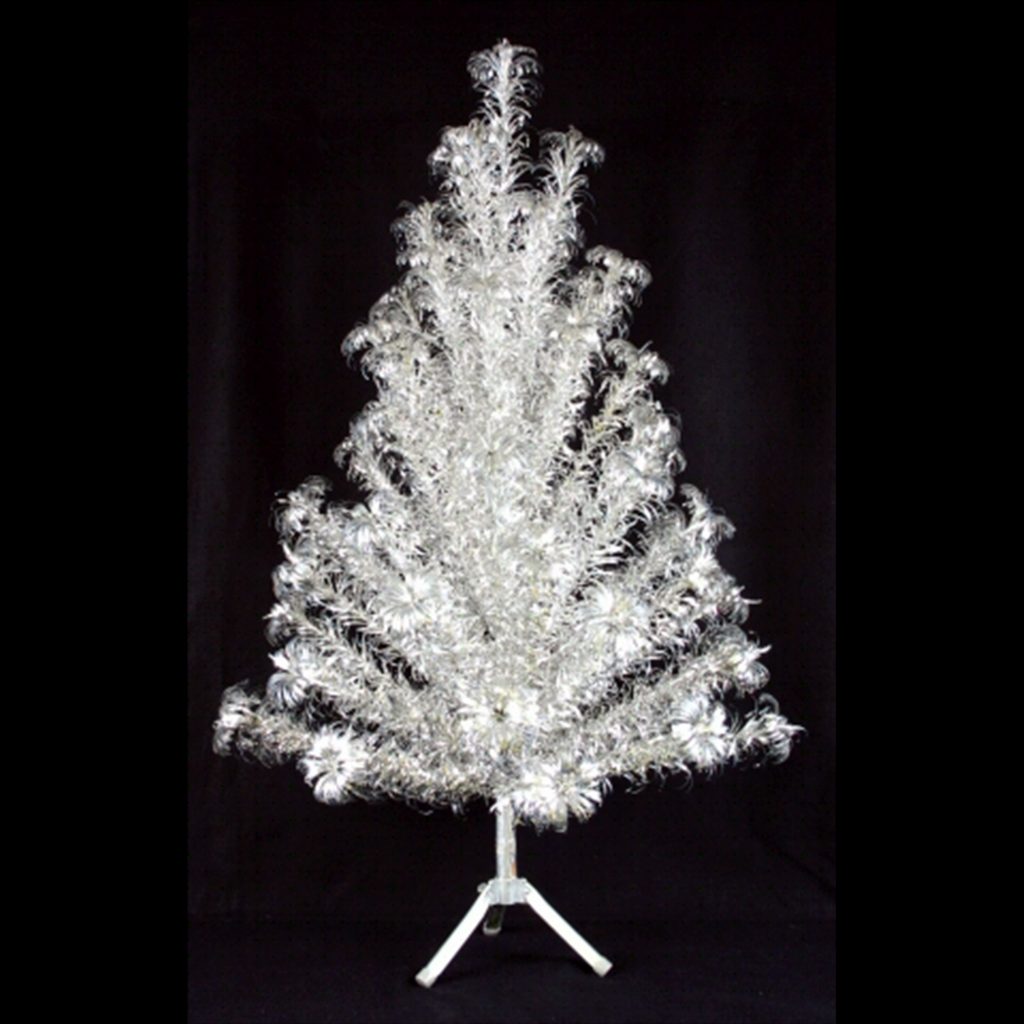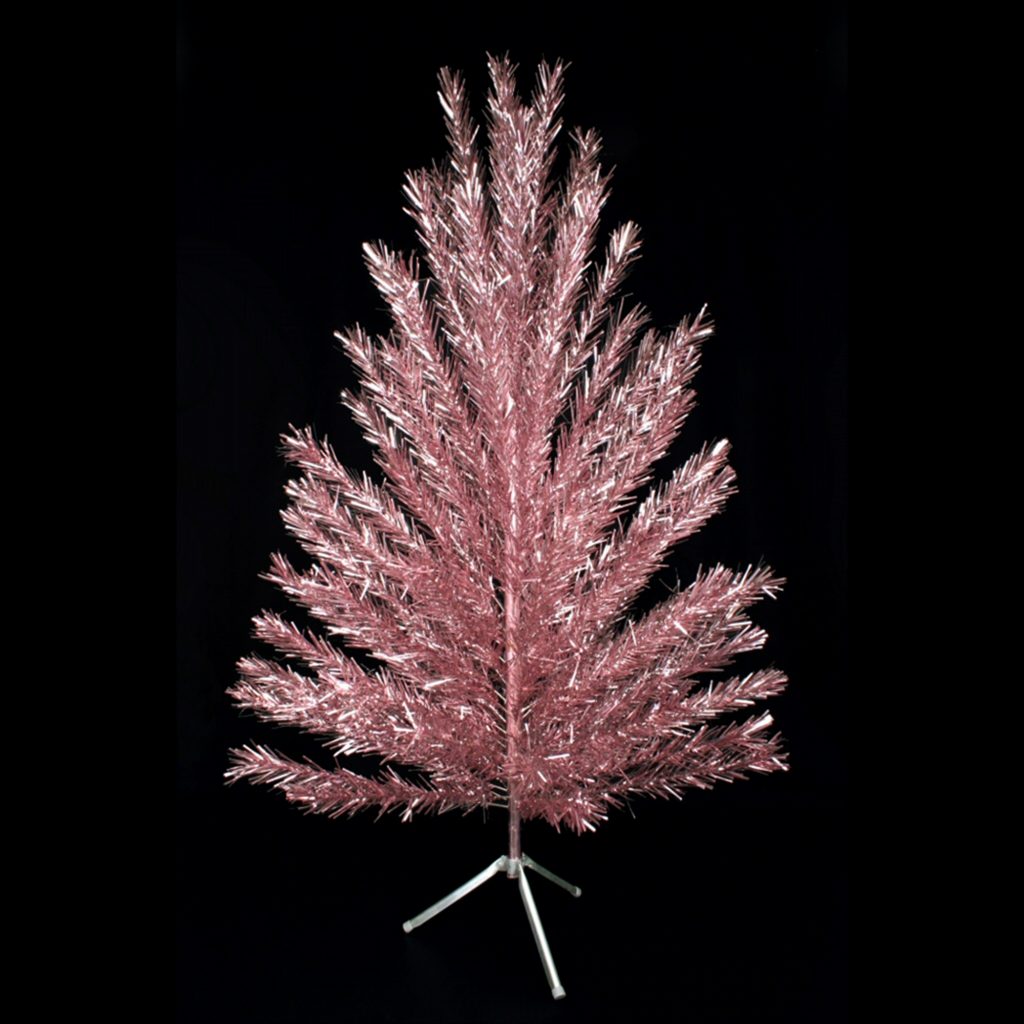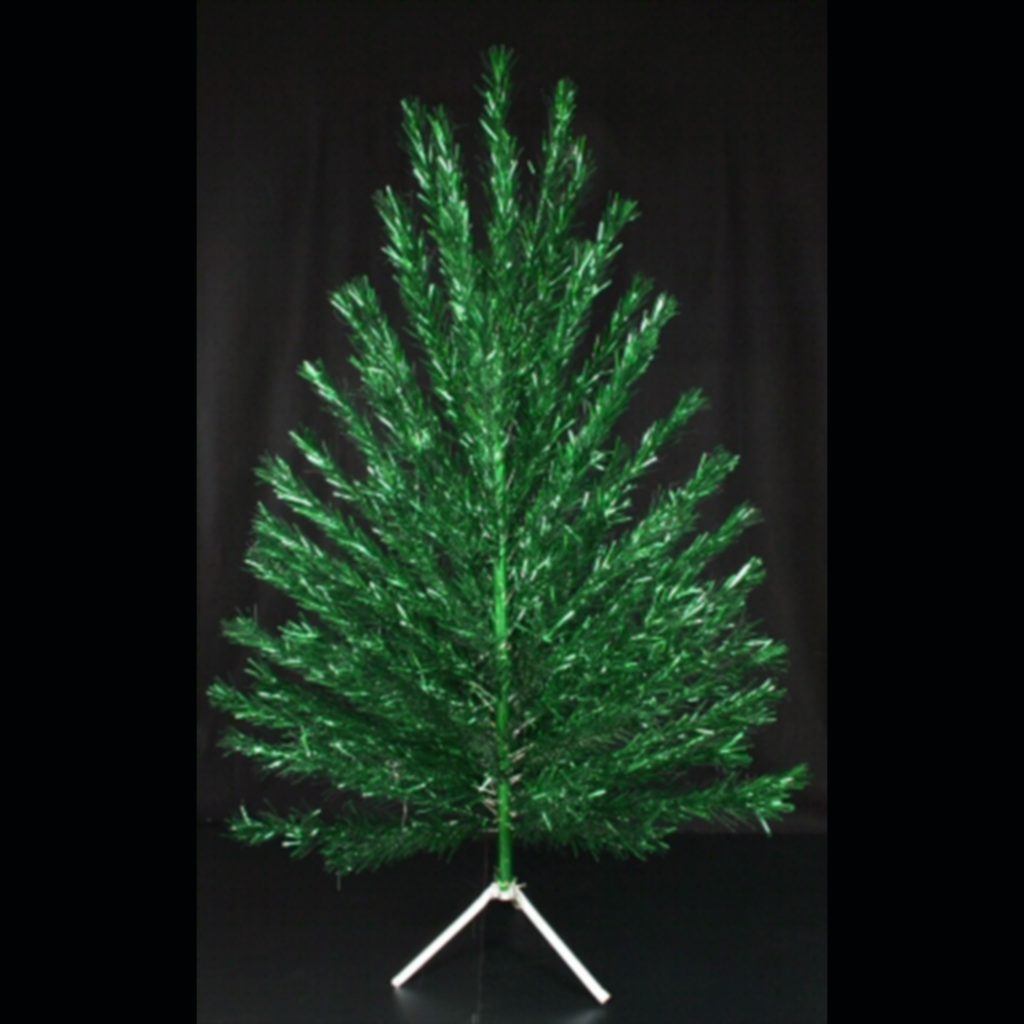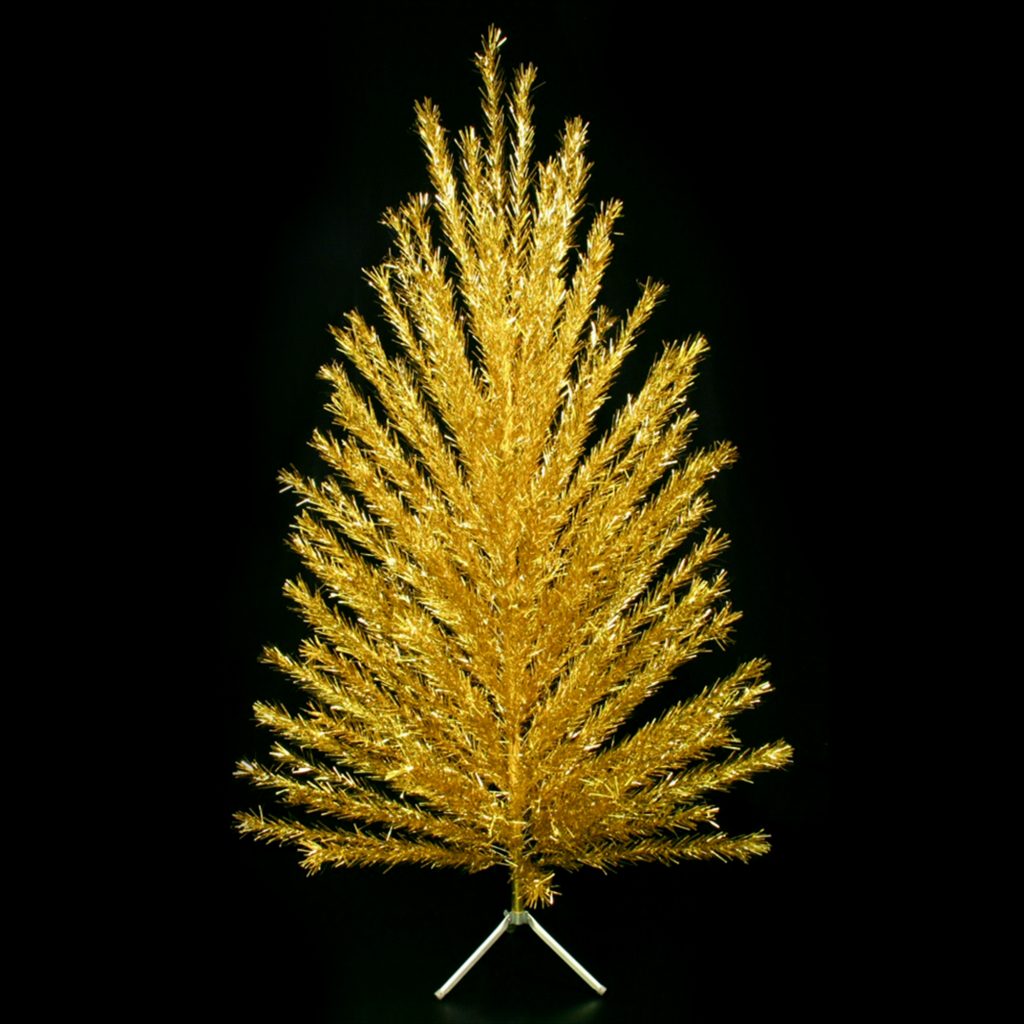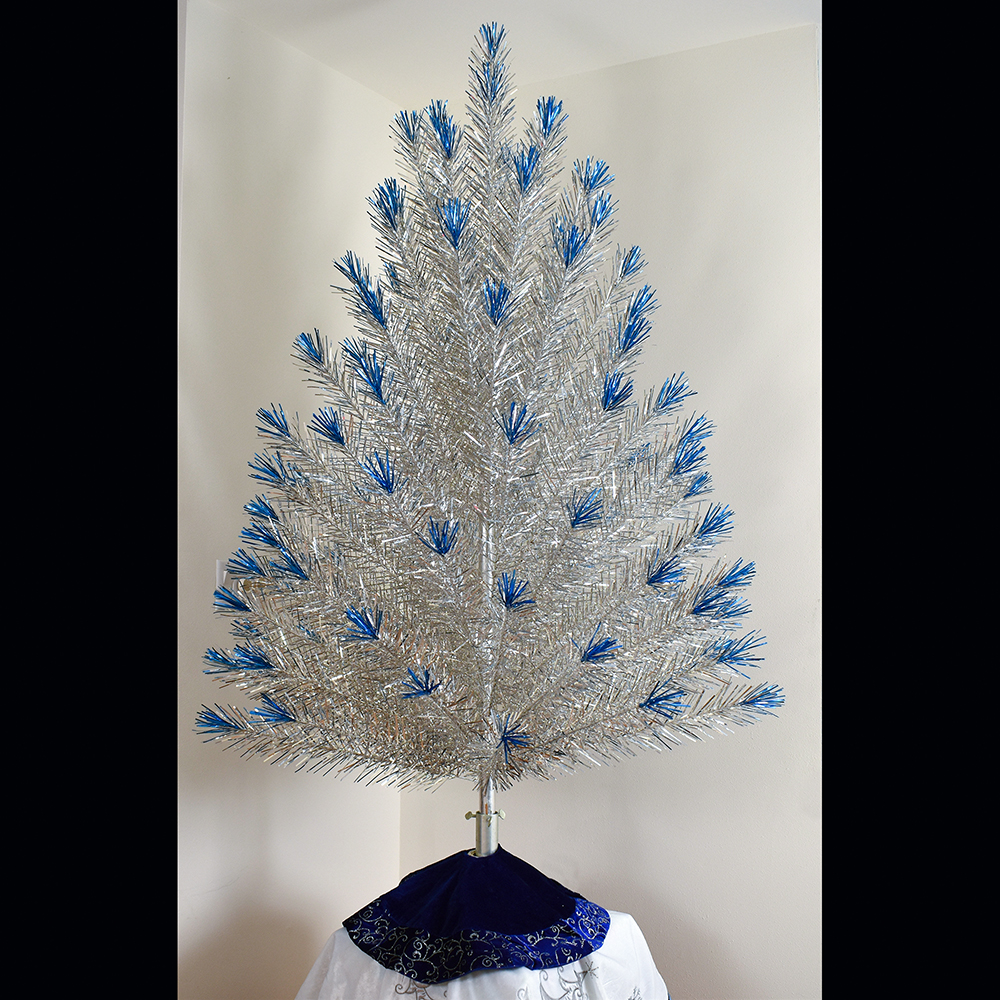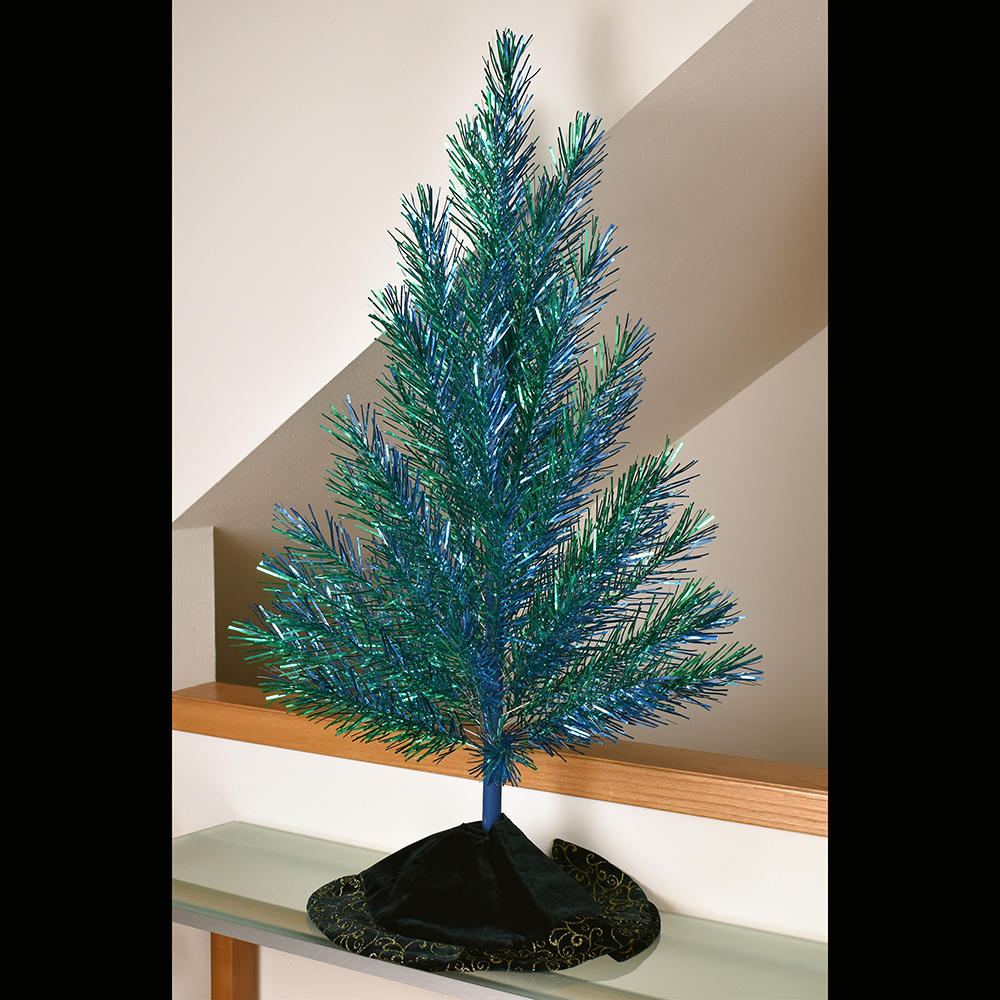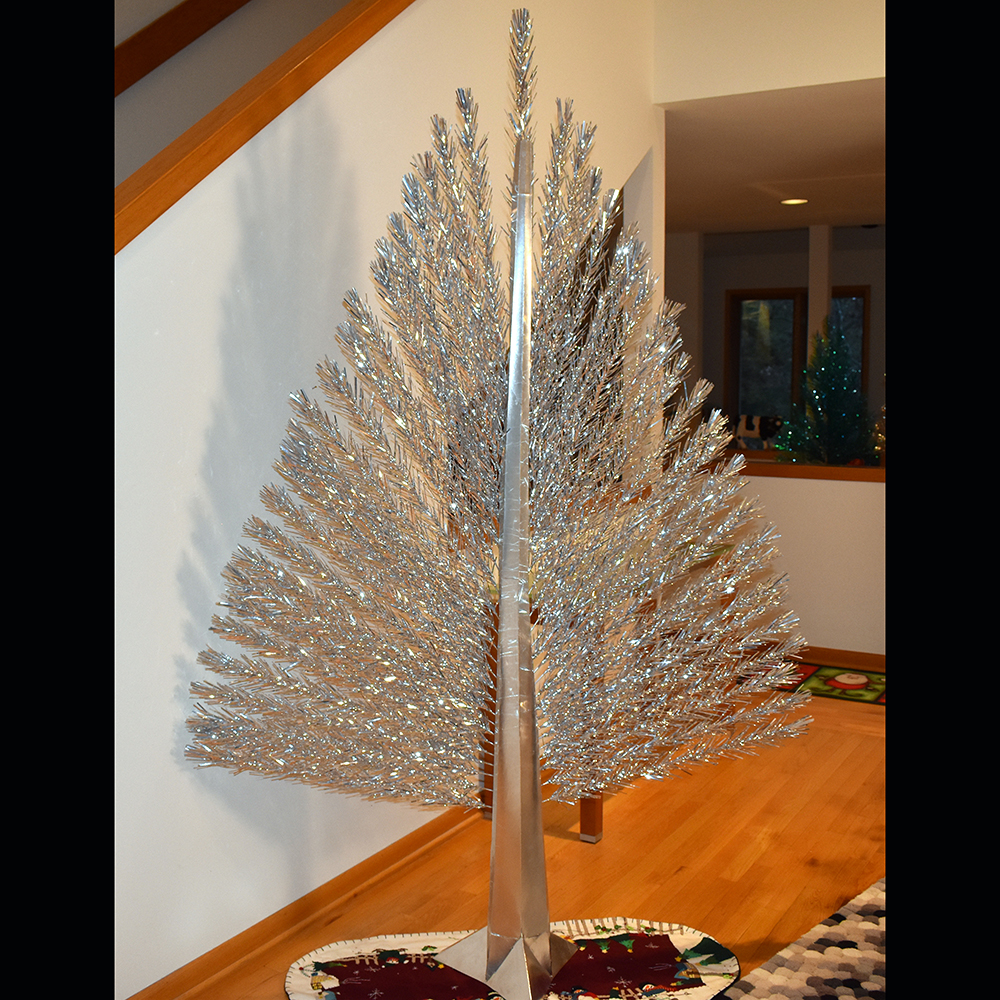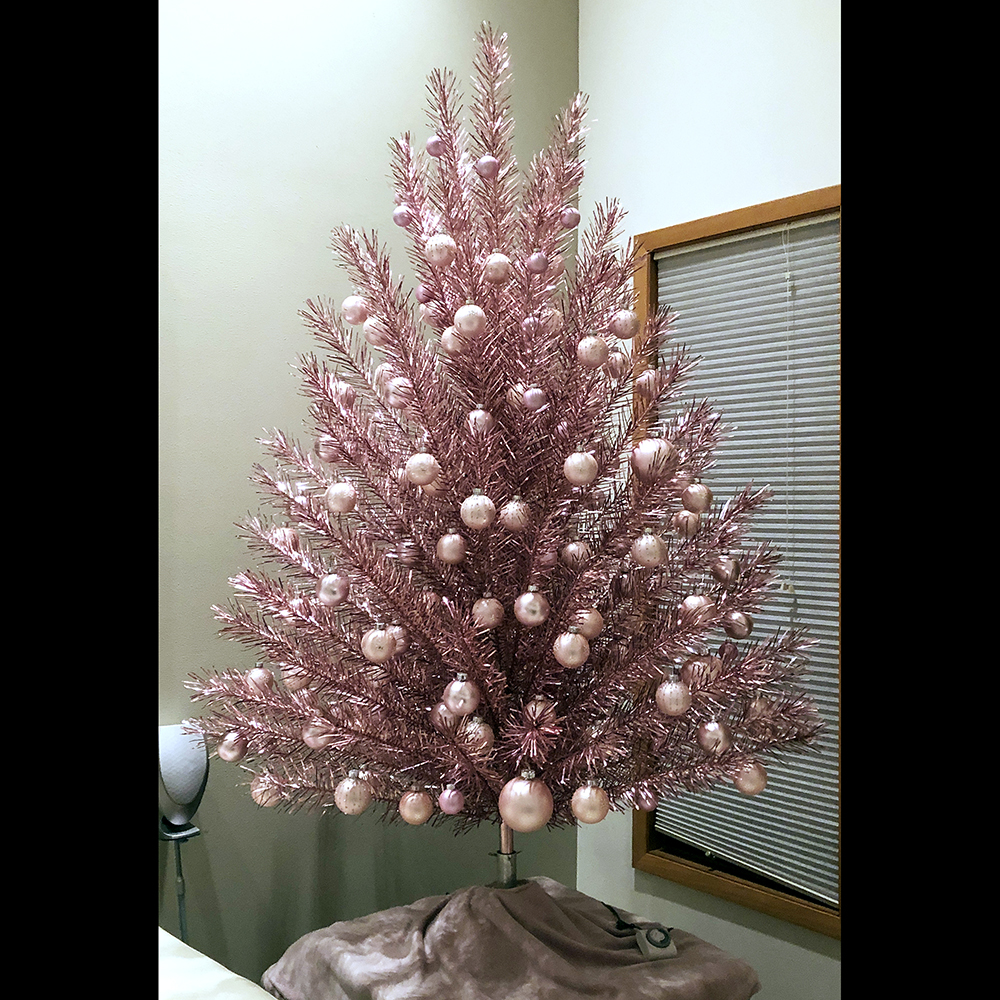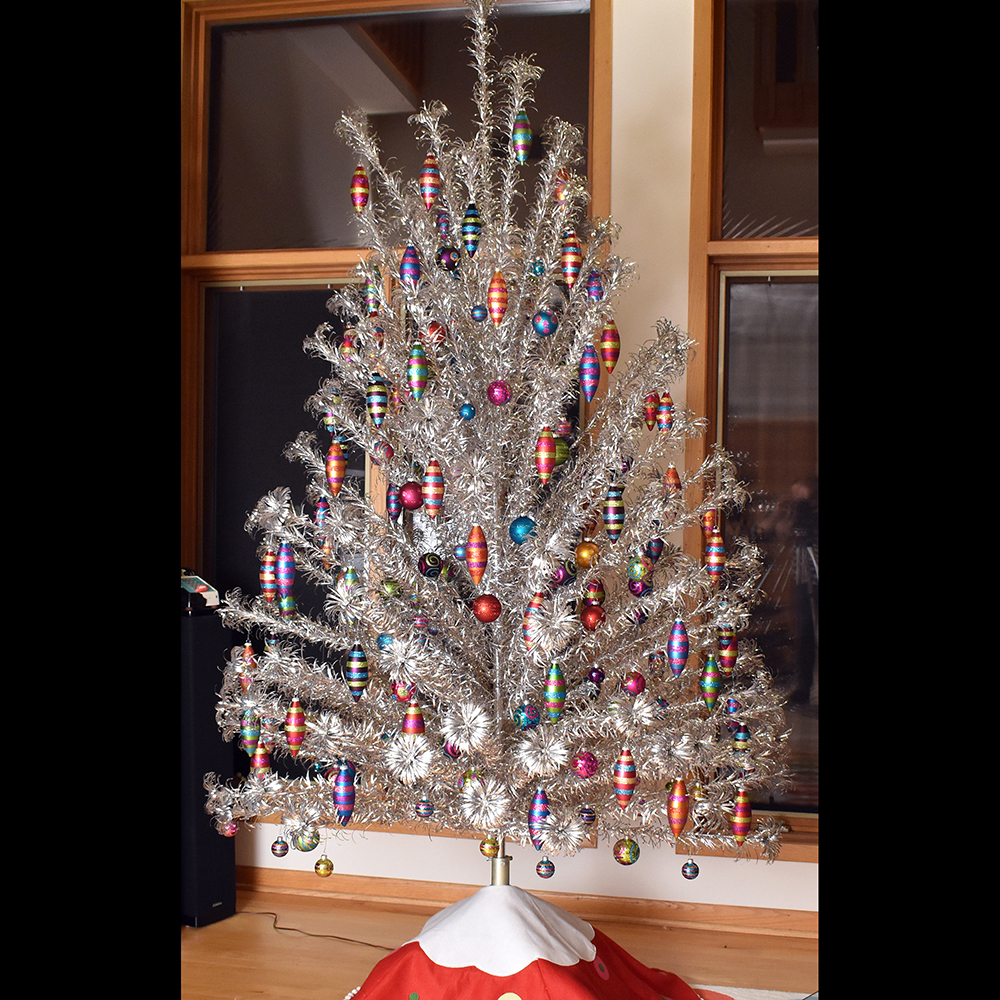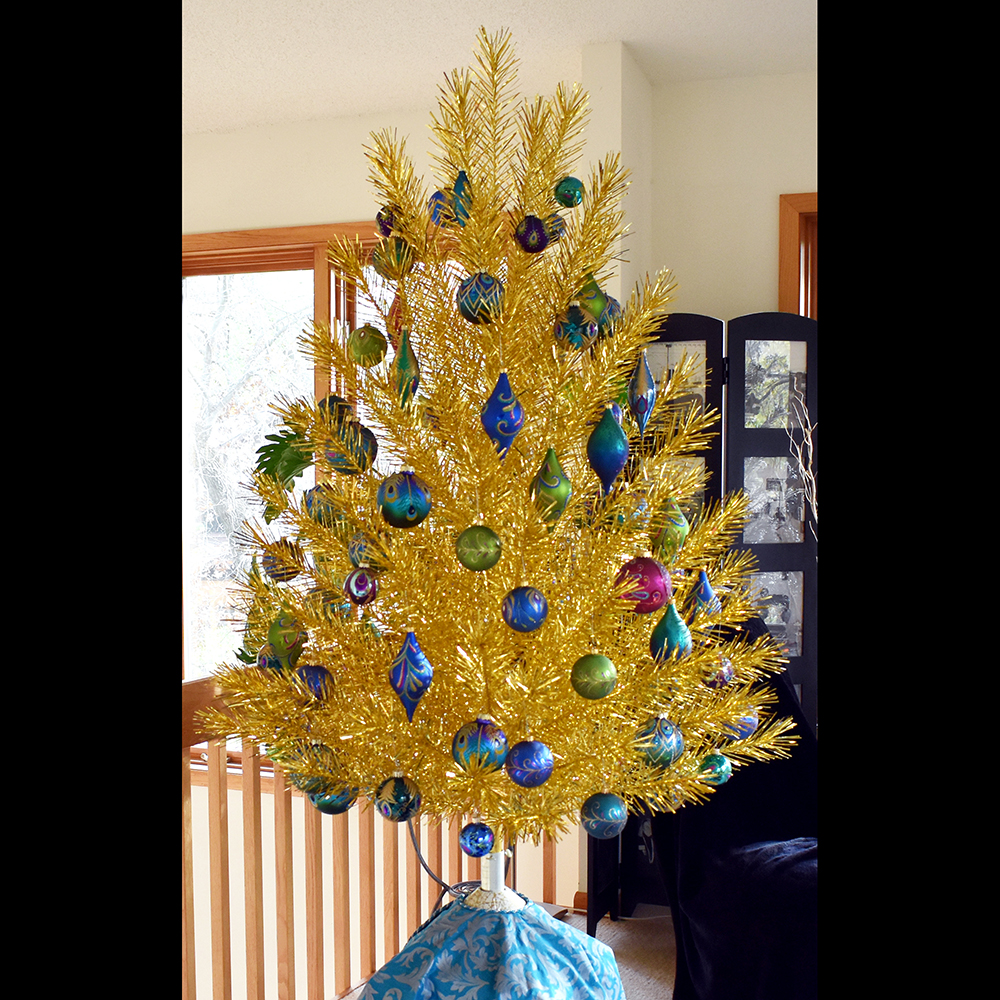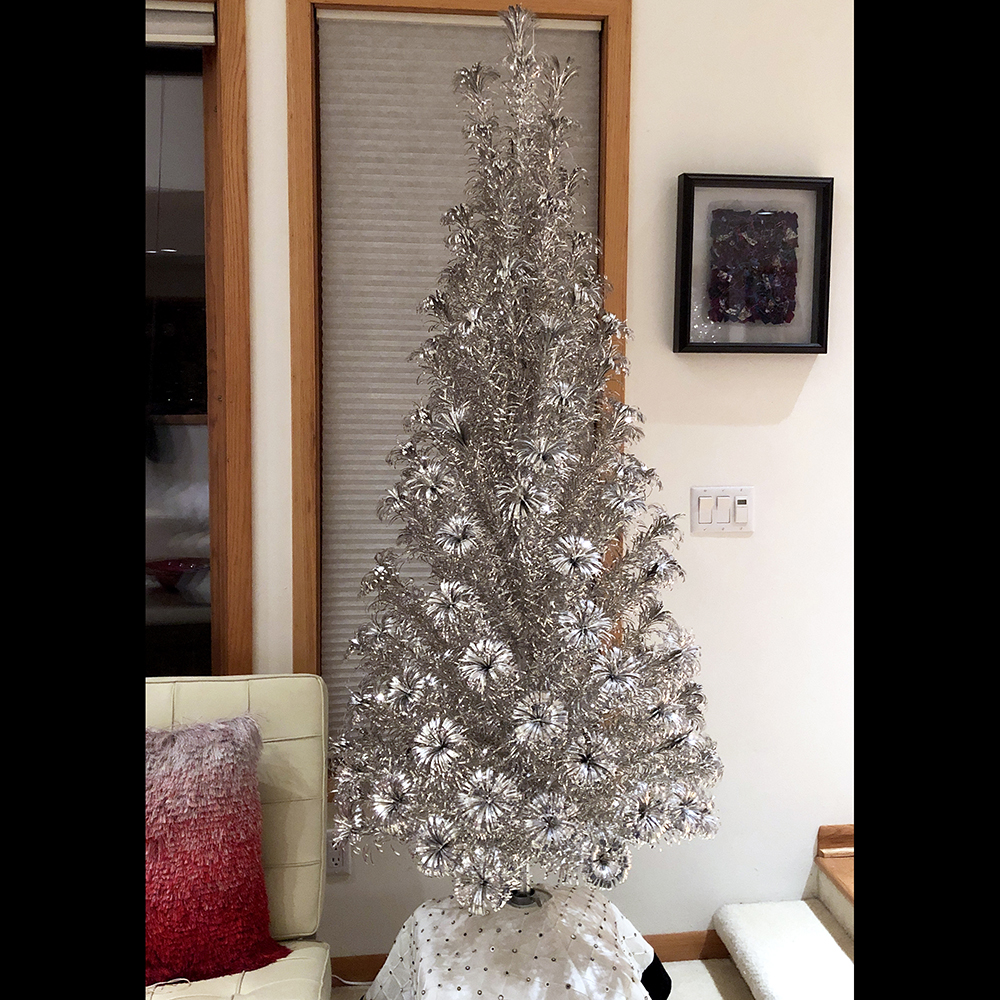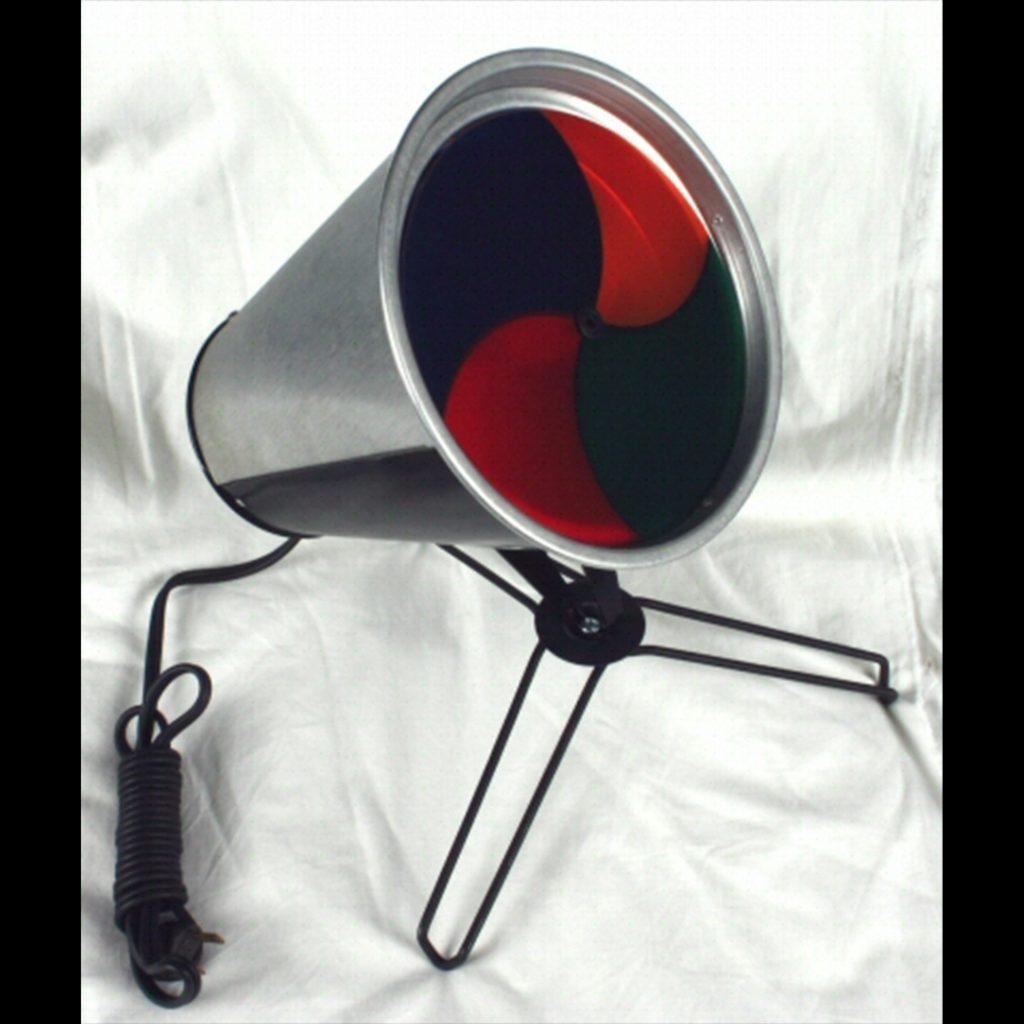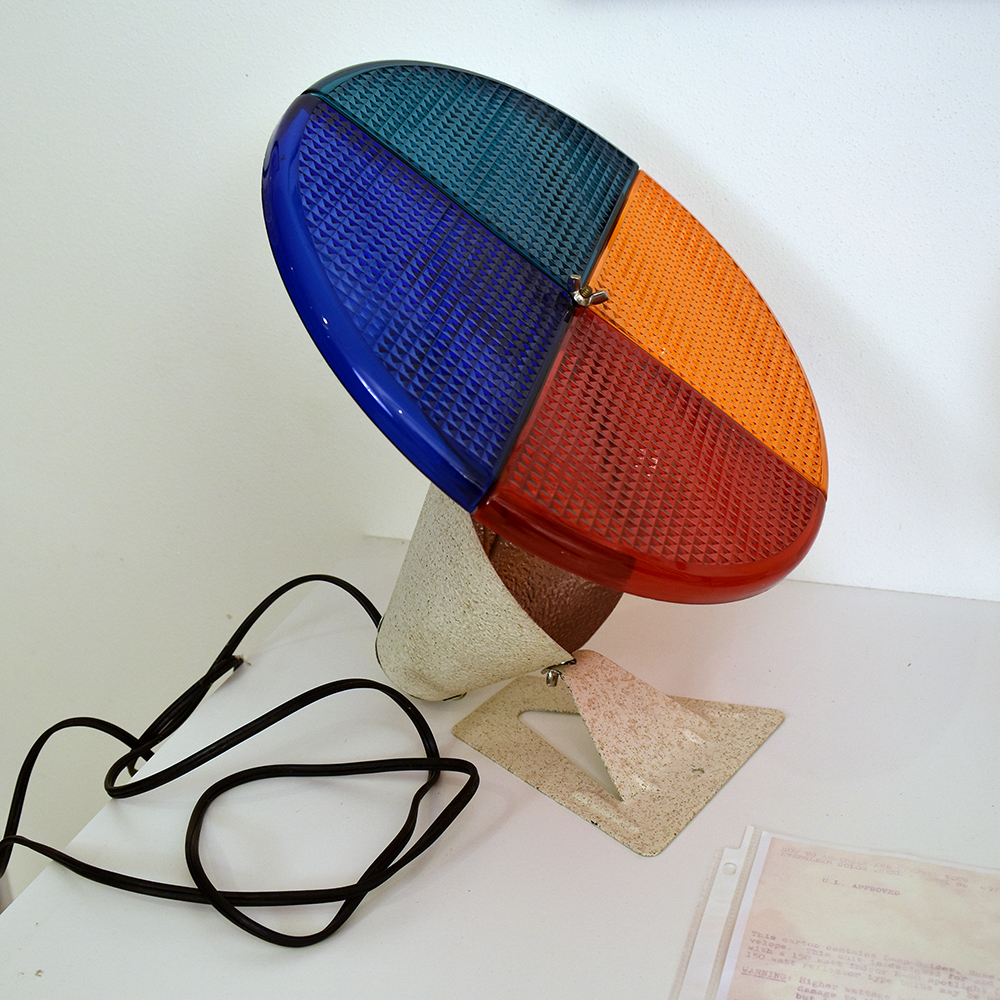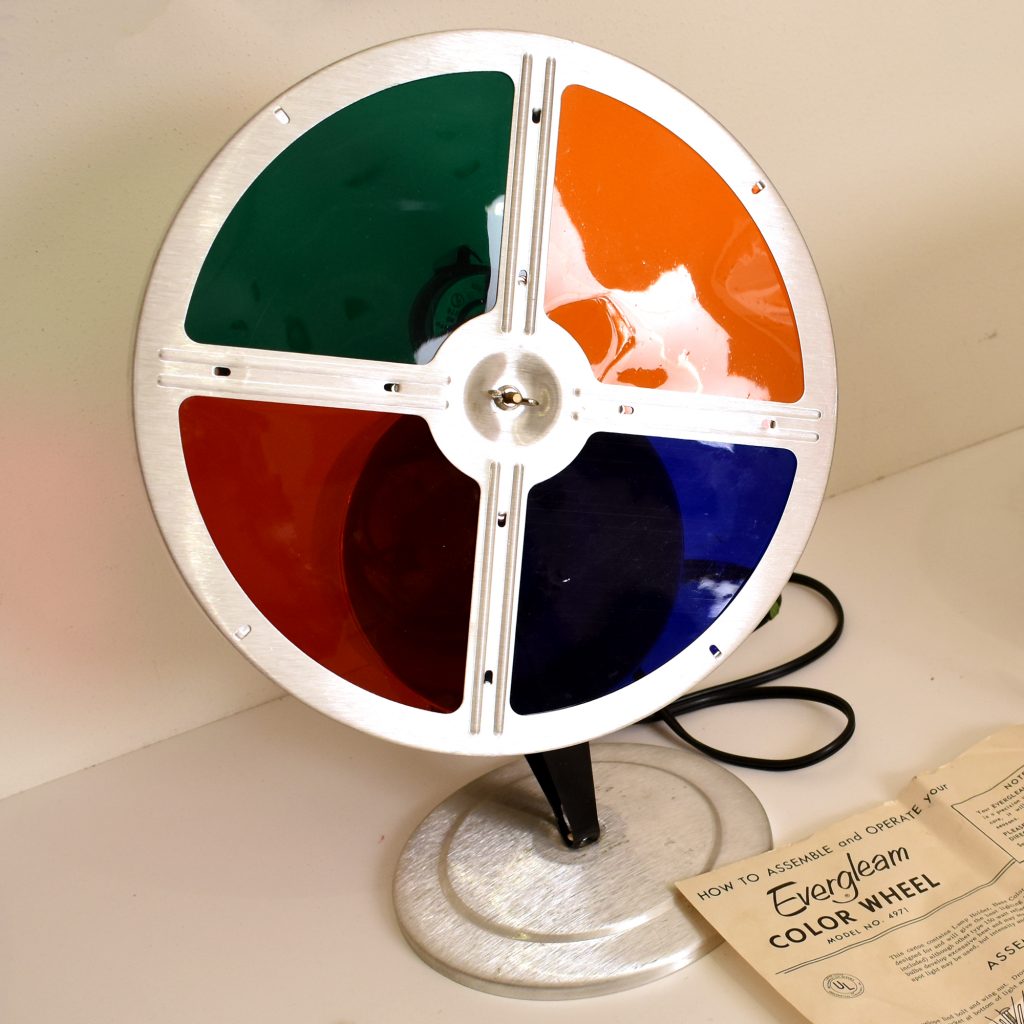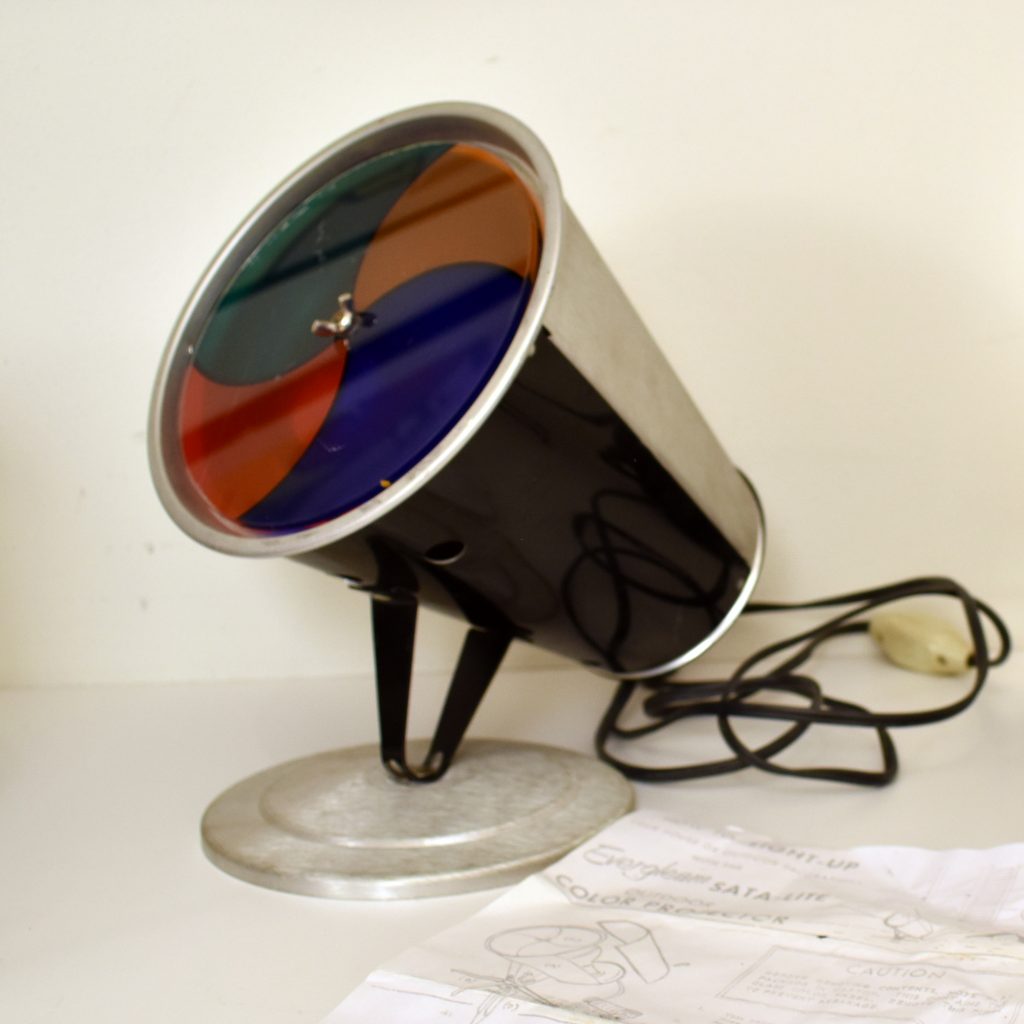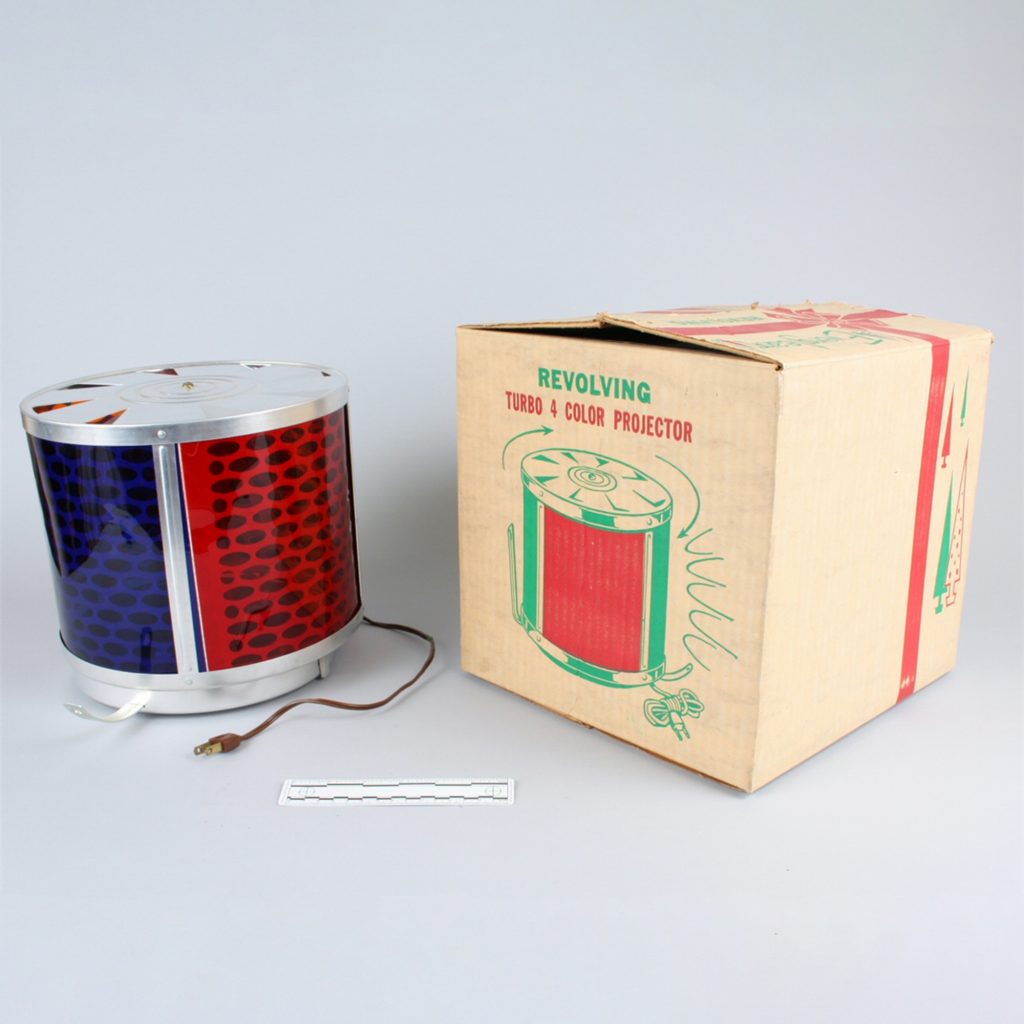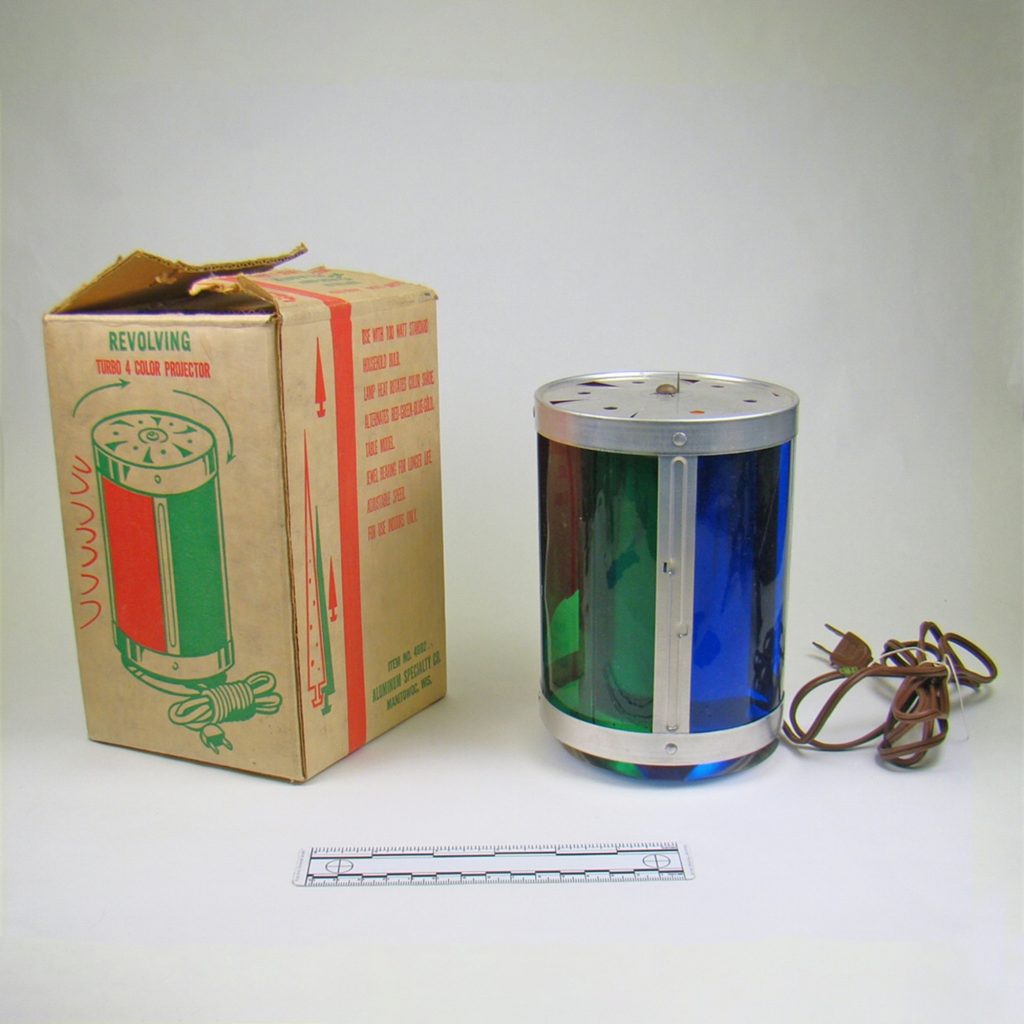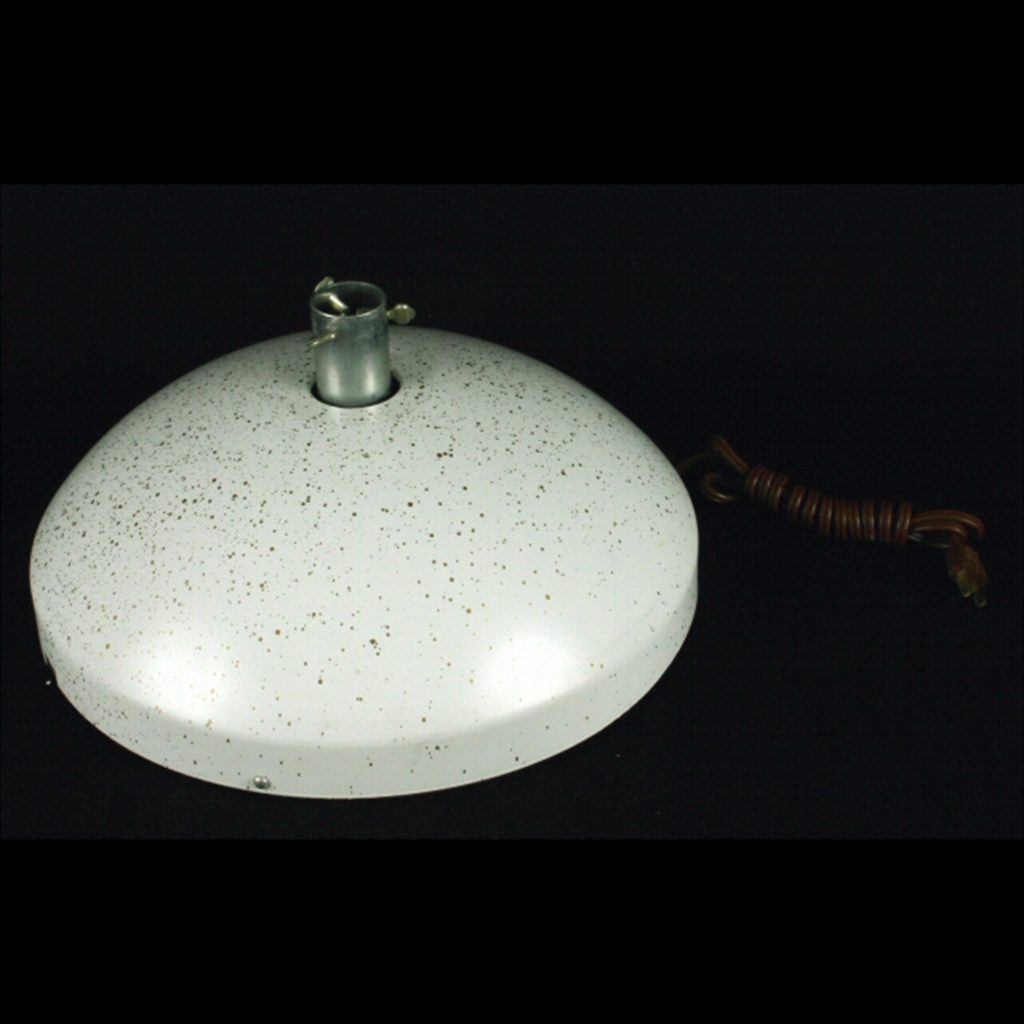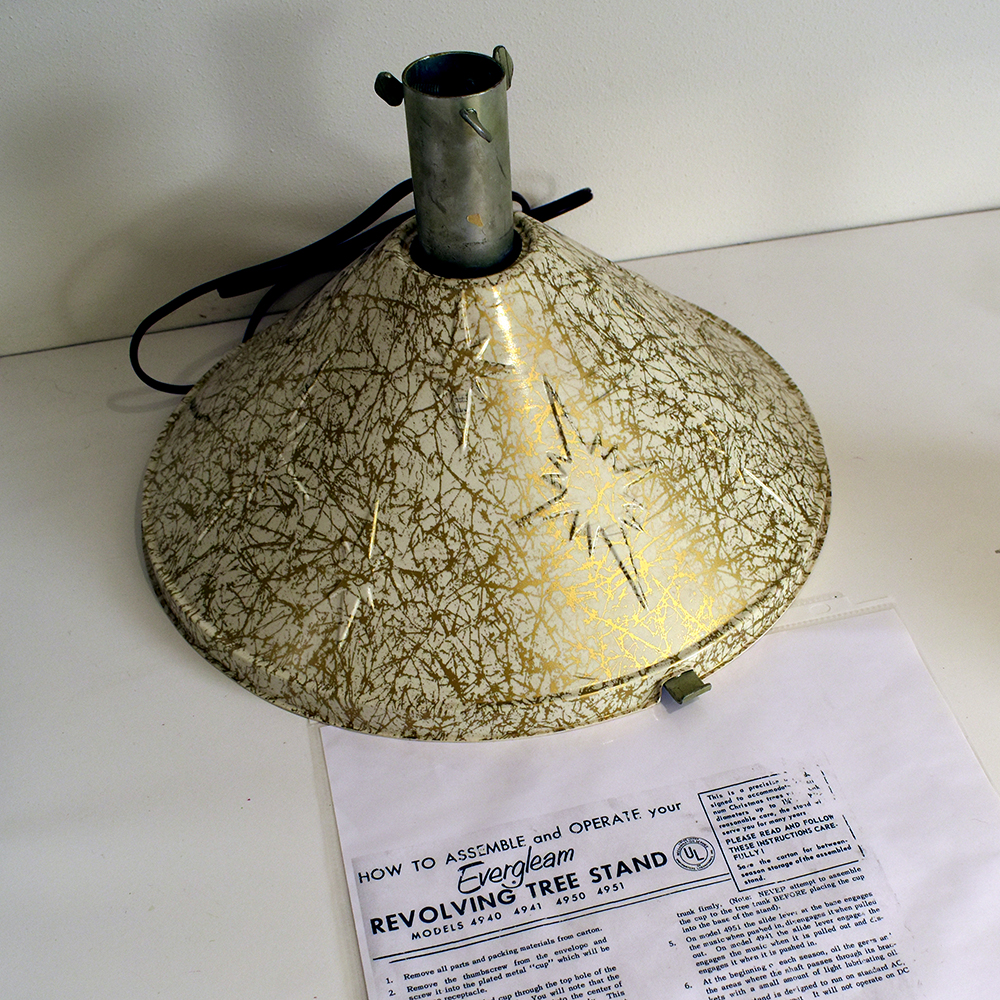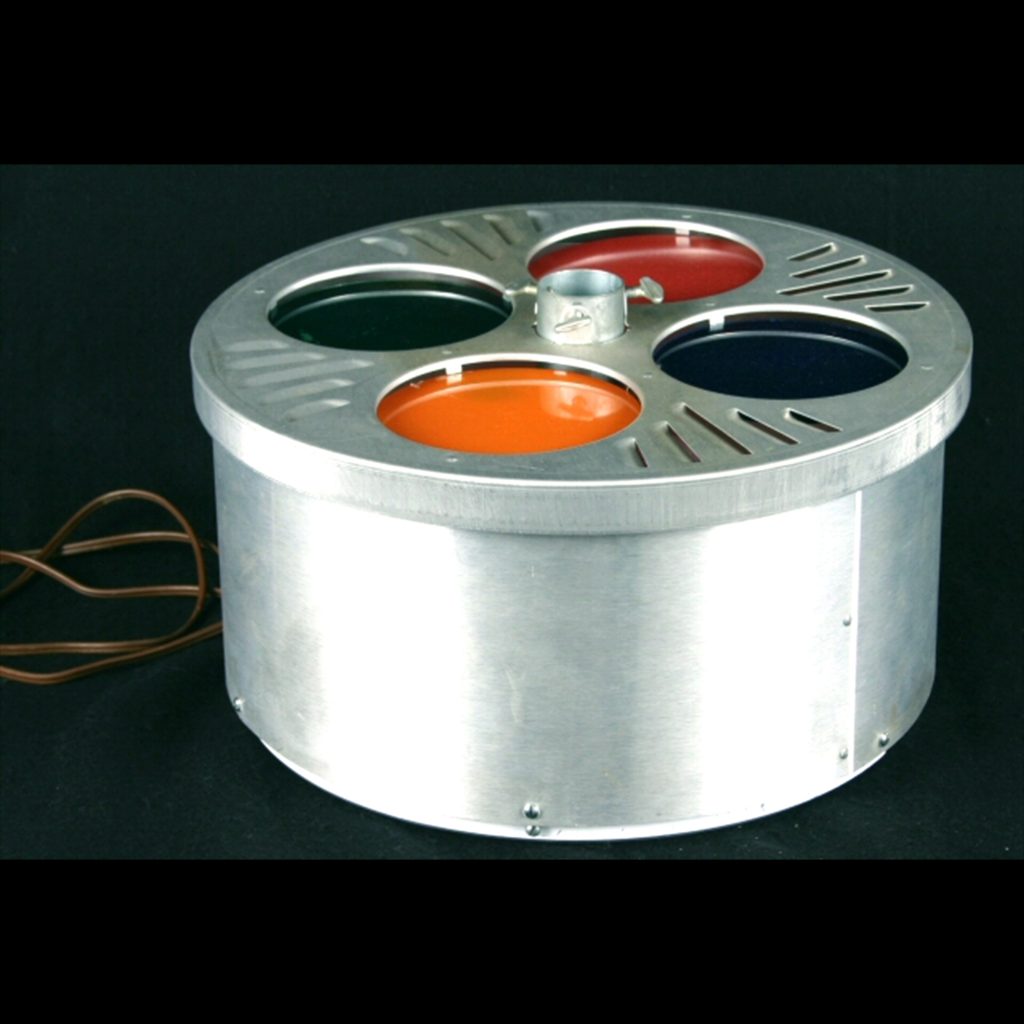
Explore the online exhibit
Scroll to discover the story of the Wisconsin-made Evergleam aluminum tree.
Learn More About Ever Gleaming
Origins
Manitowoc — A Hotbed of Aluminum
In 1959, Manitowoc was home to two of the largest manufacturers of aluminum goods in the country. The Aluminum Specialty Company and the Mirro Aluminum Company (previously the Aluminum Goods Manufacturing Company) produced housewares and toys on a massive scale.
See historic images of the Manitowoc–Two Rivers area in this gallery of historic images.
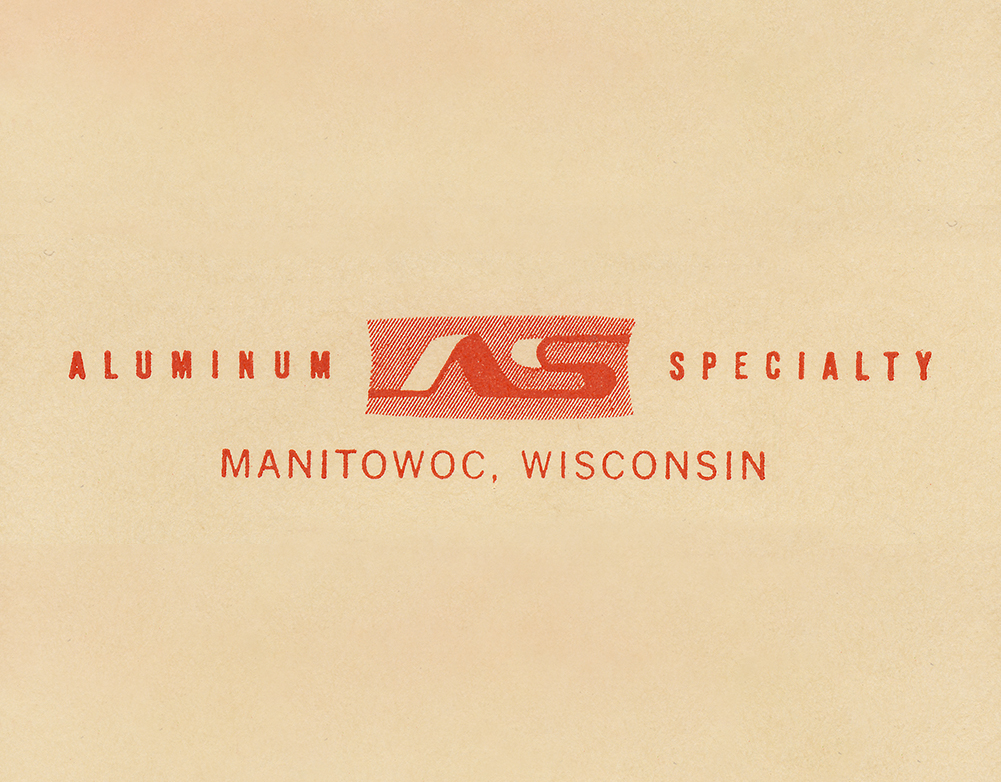
WHS Museum #2005.167.1.4
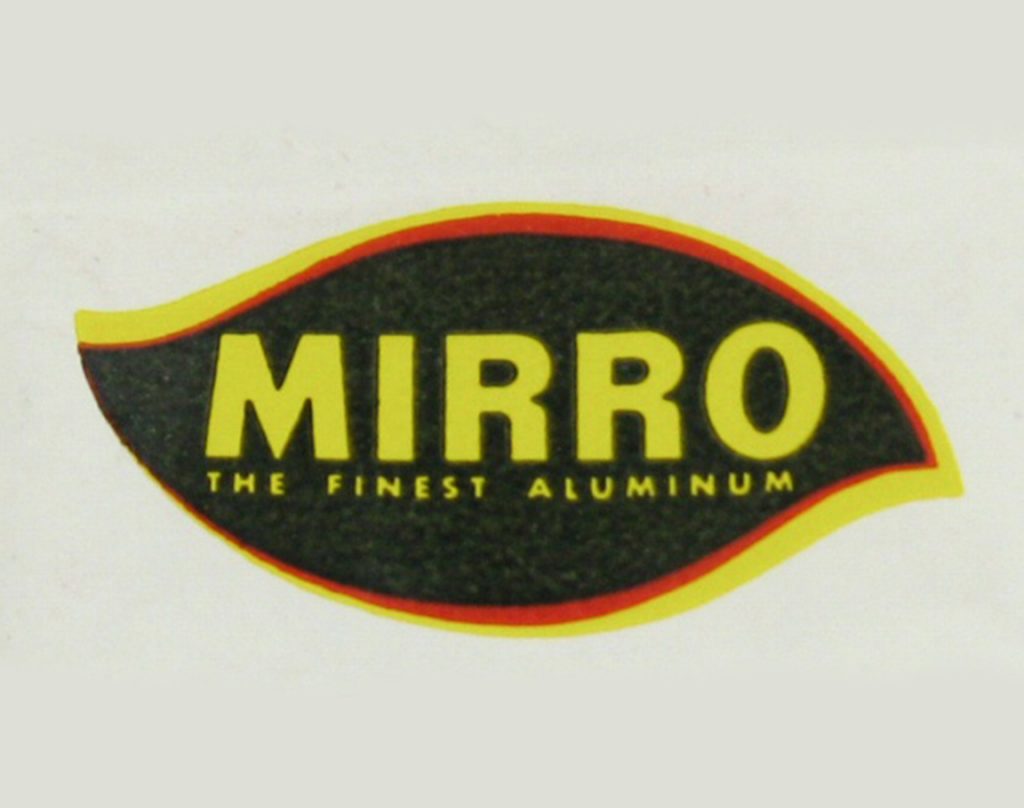
WHS Museum #2007.57.3.1
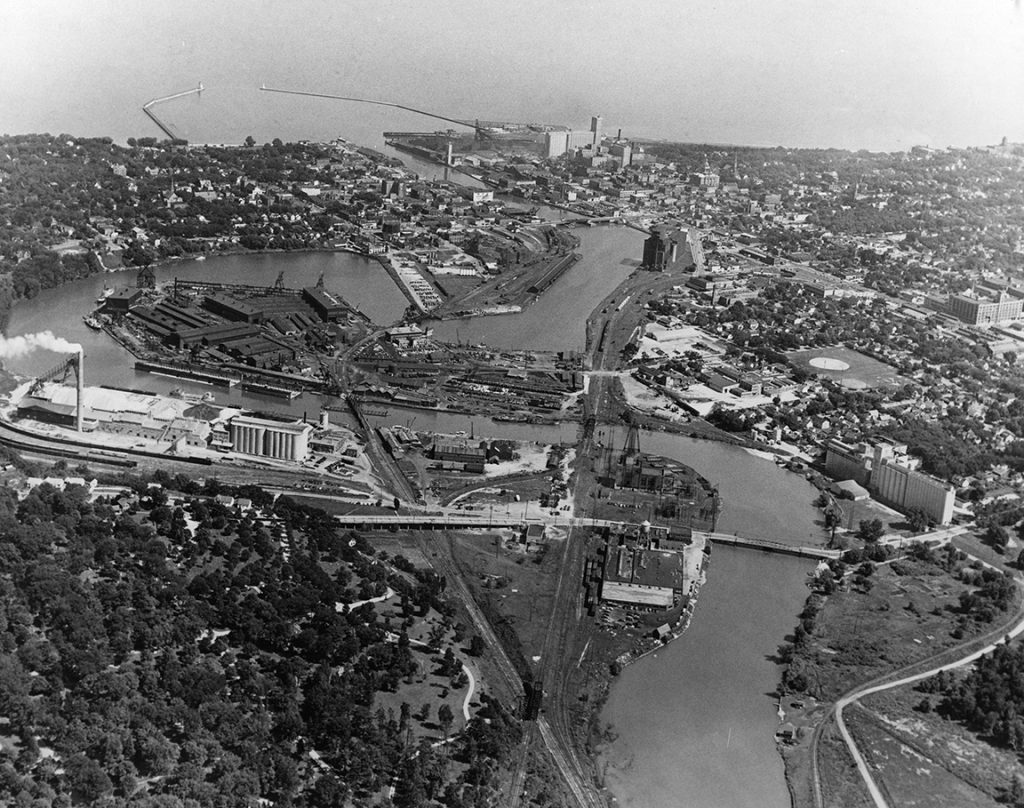
WHI Image ID 38392
Photo Gallery of Aluminum Products
The Wisconsin Historical Society has more than one hundred aluminum items made in the Manitowoc–Two Rivers region. Here is a sampling of some of those products.
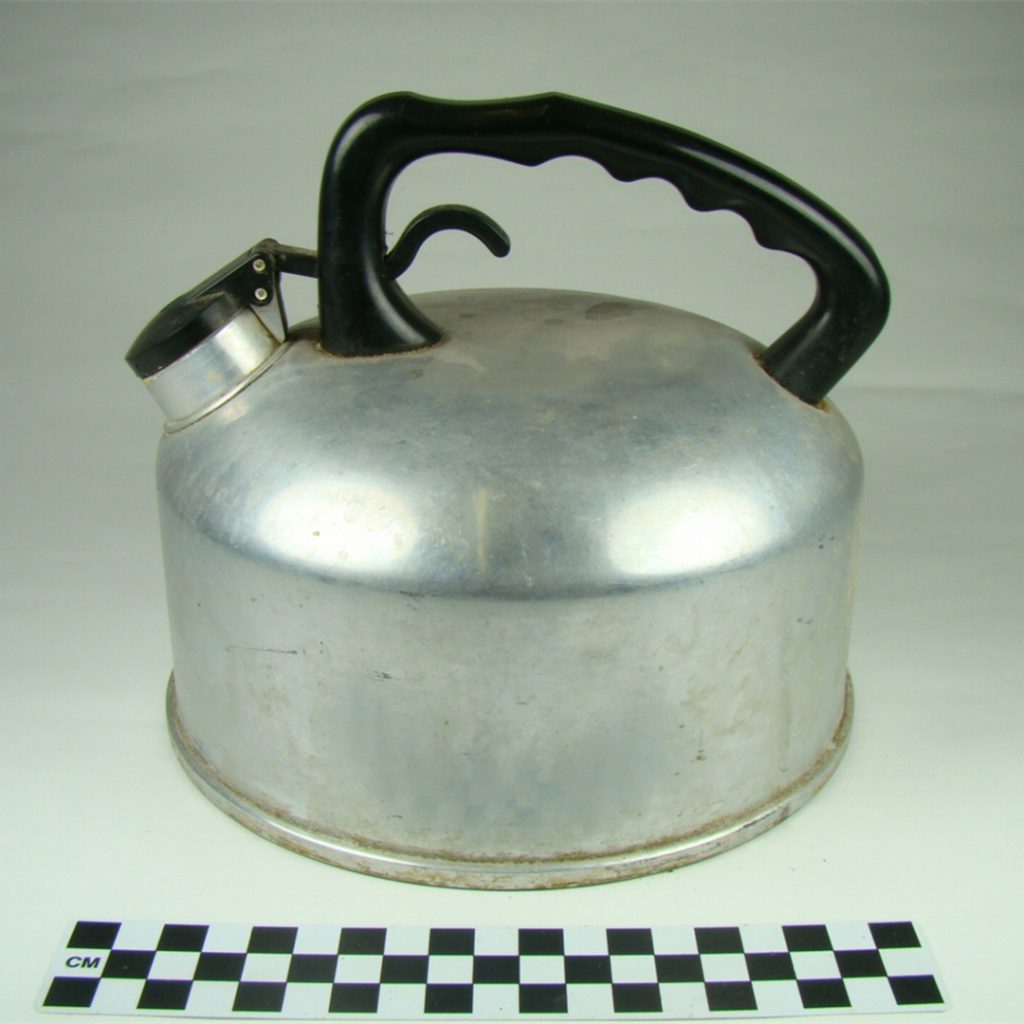
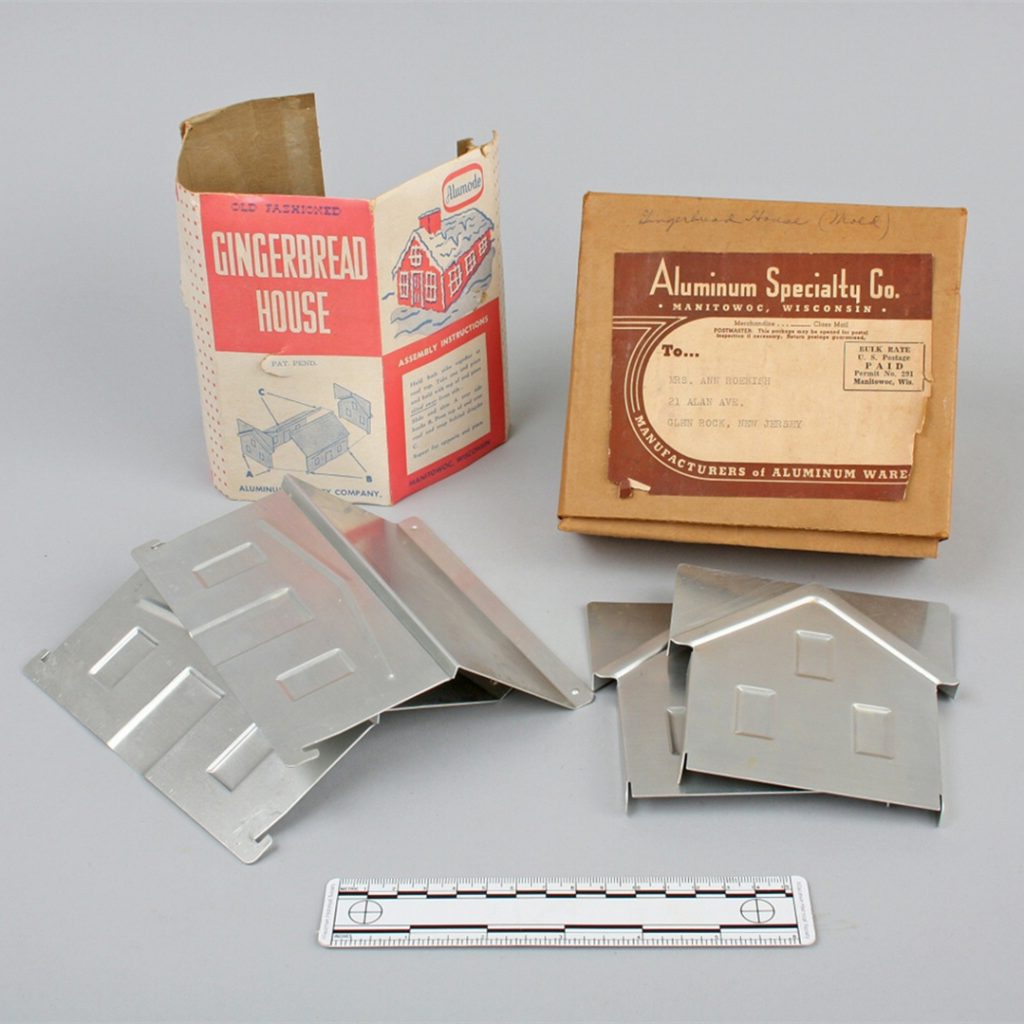

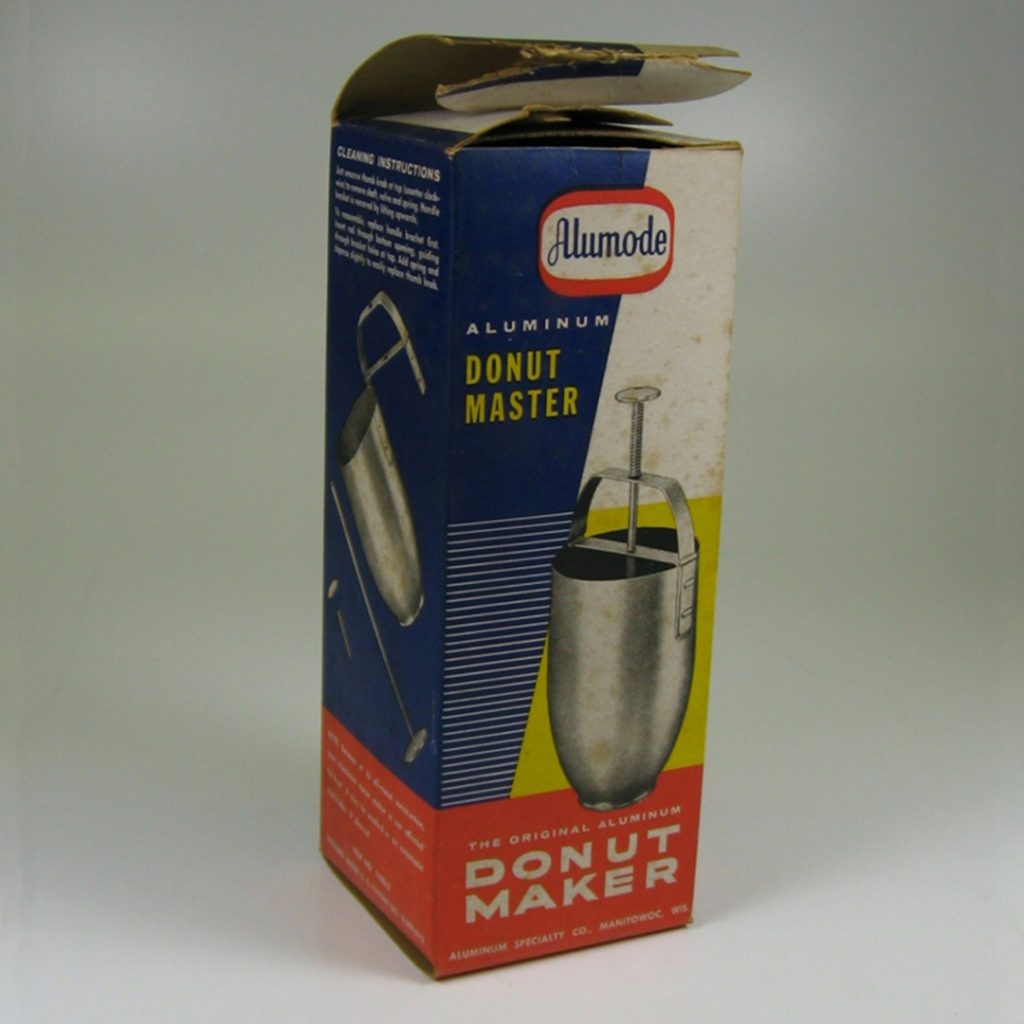
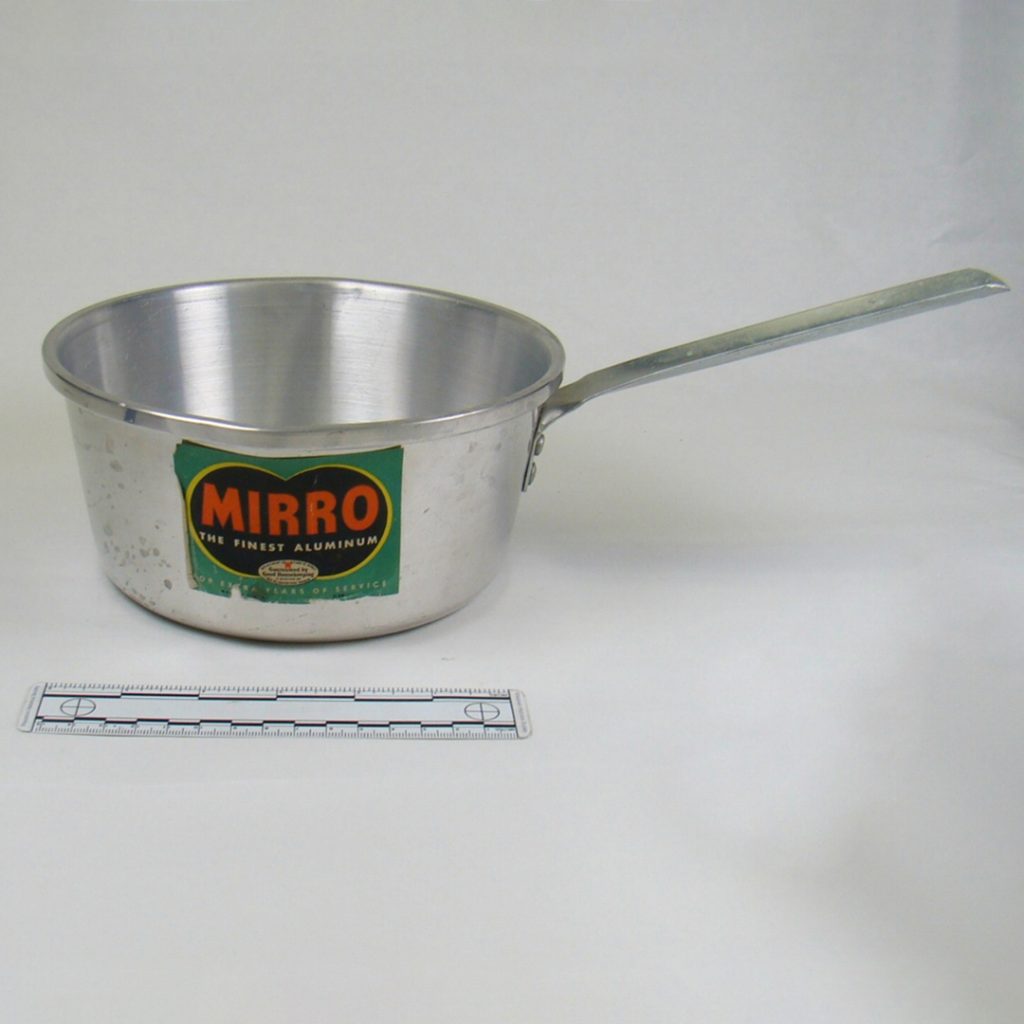
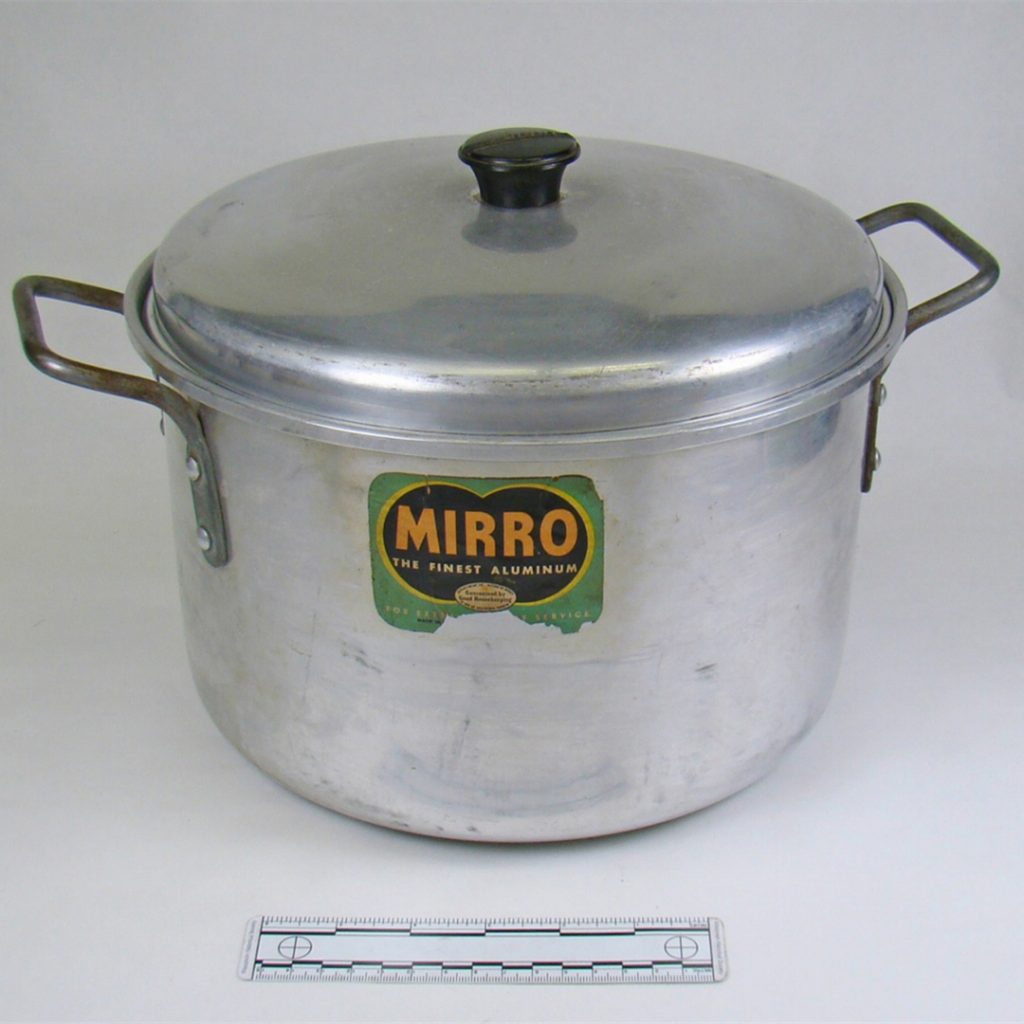
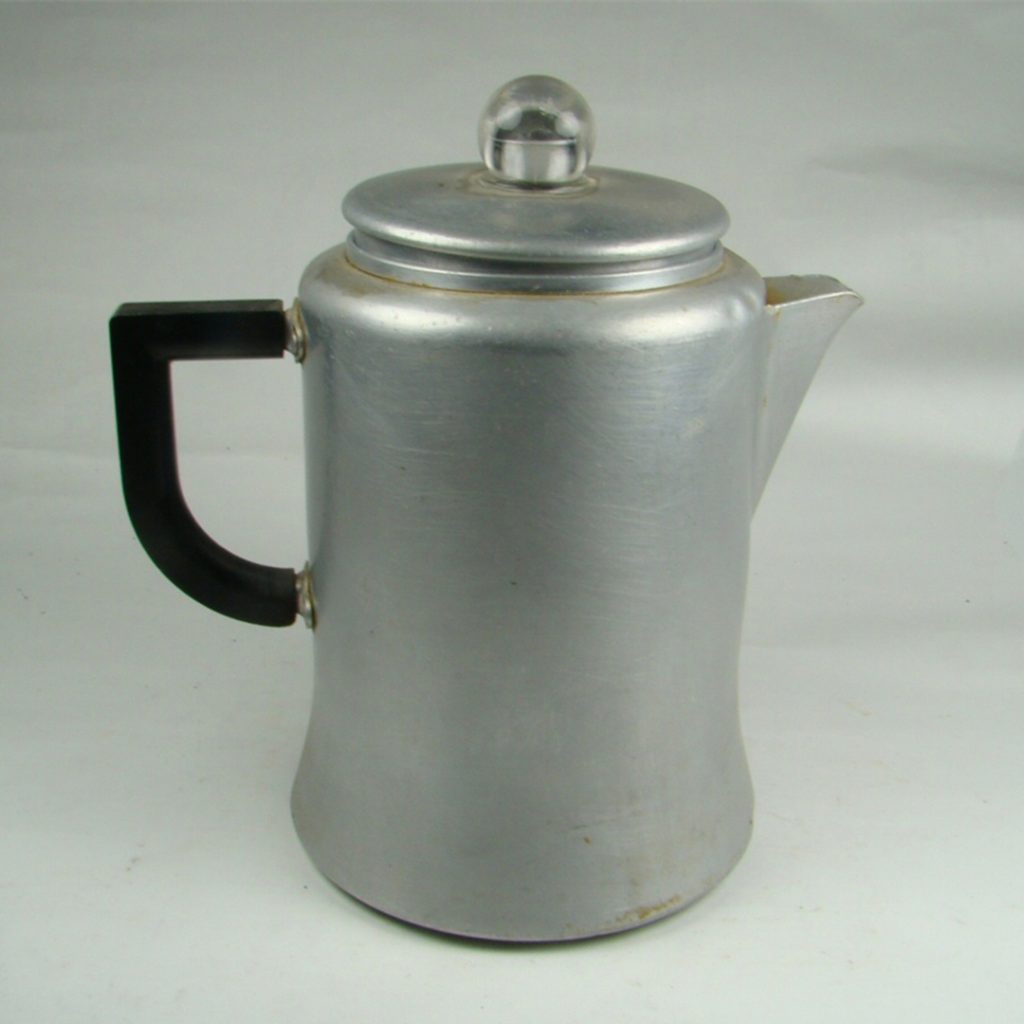
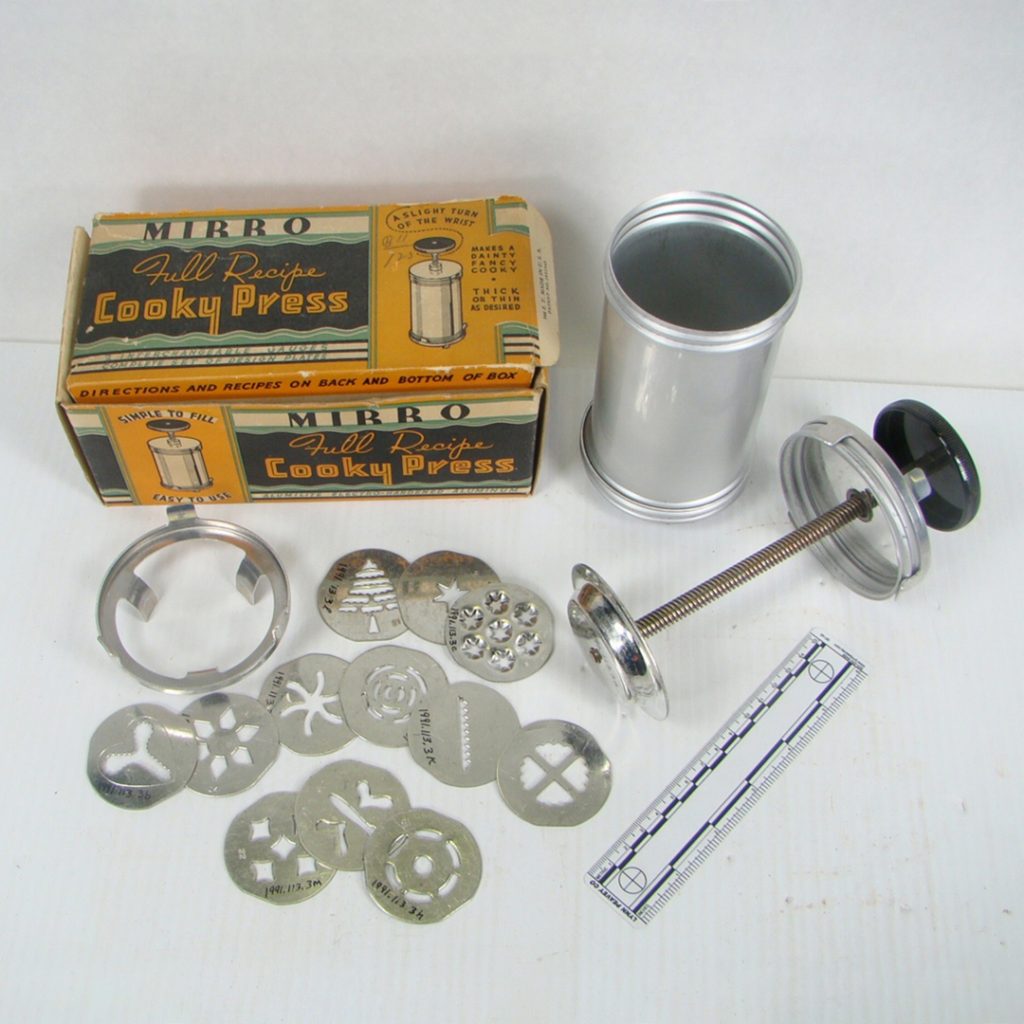
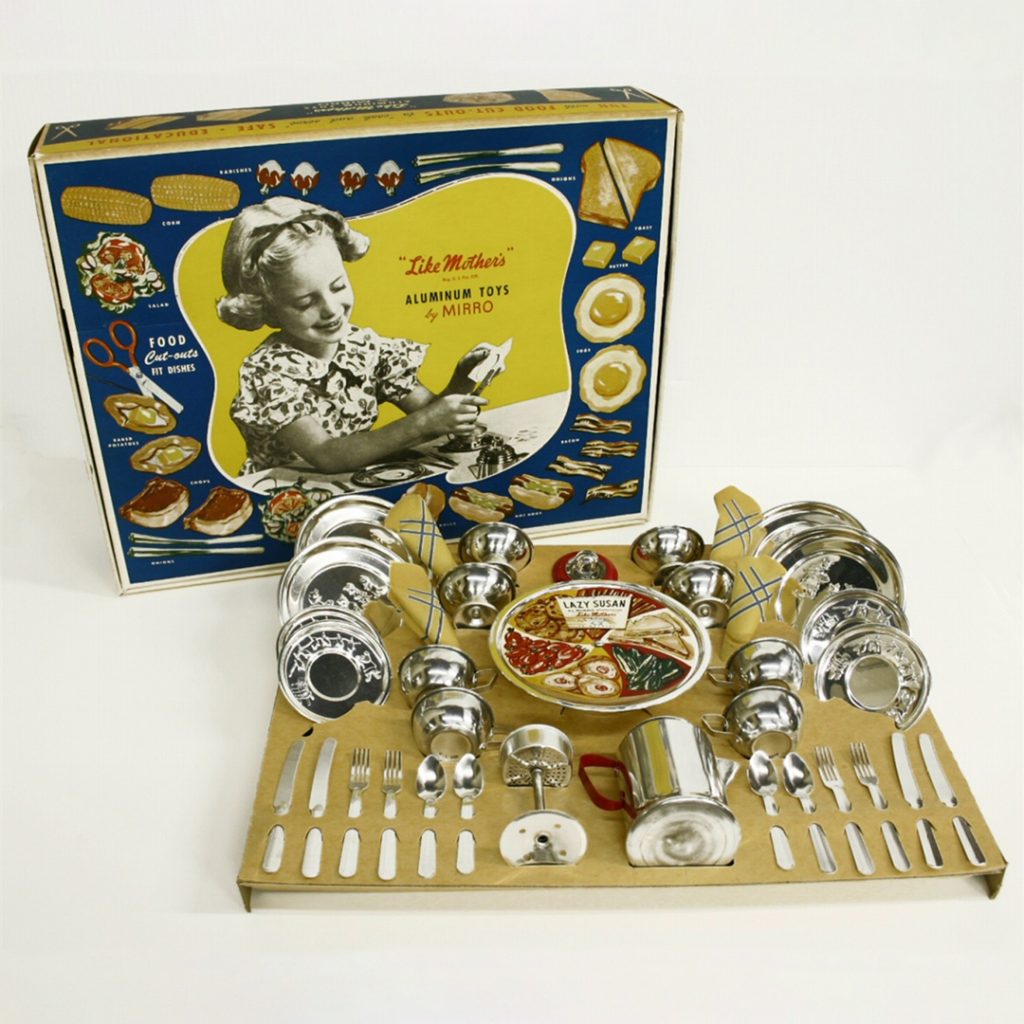
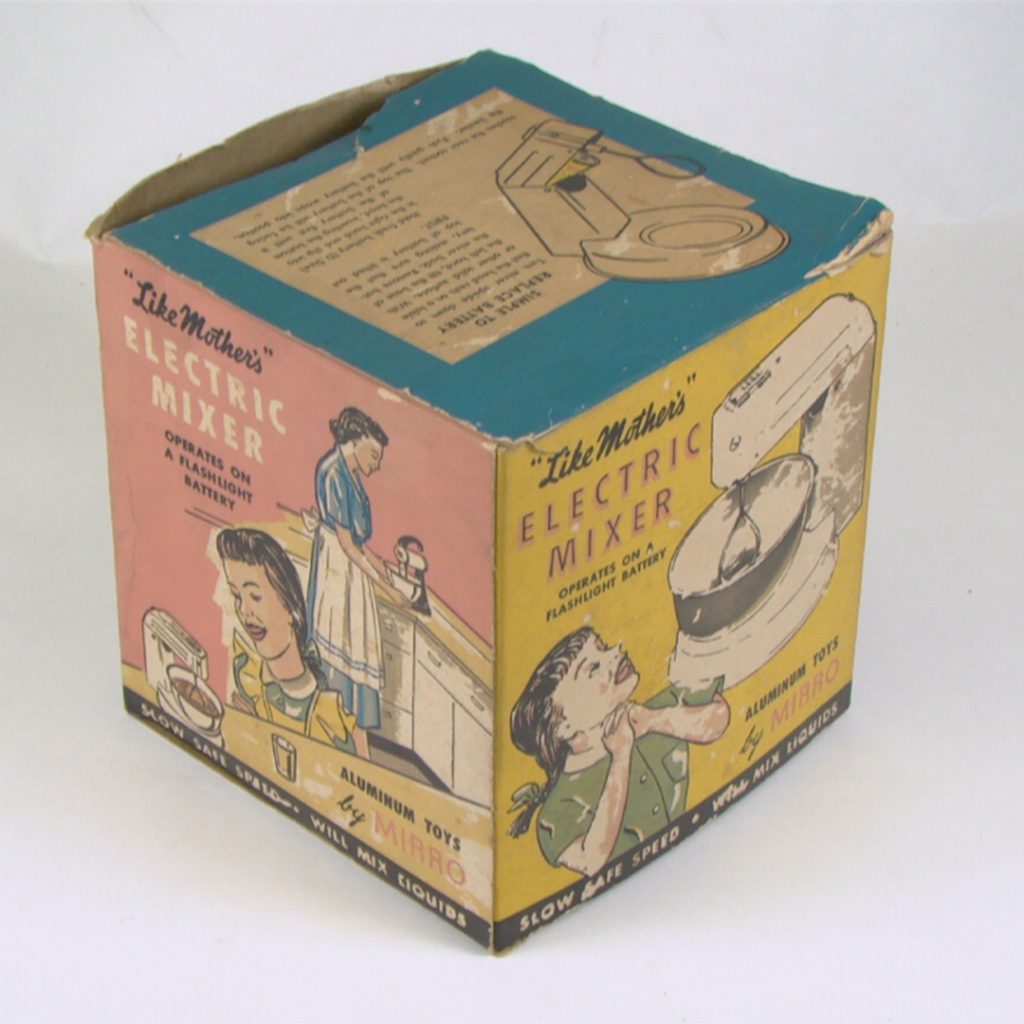
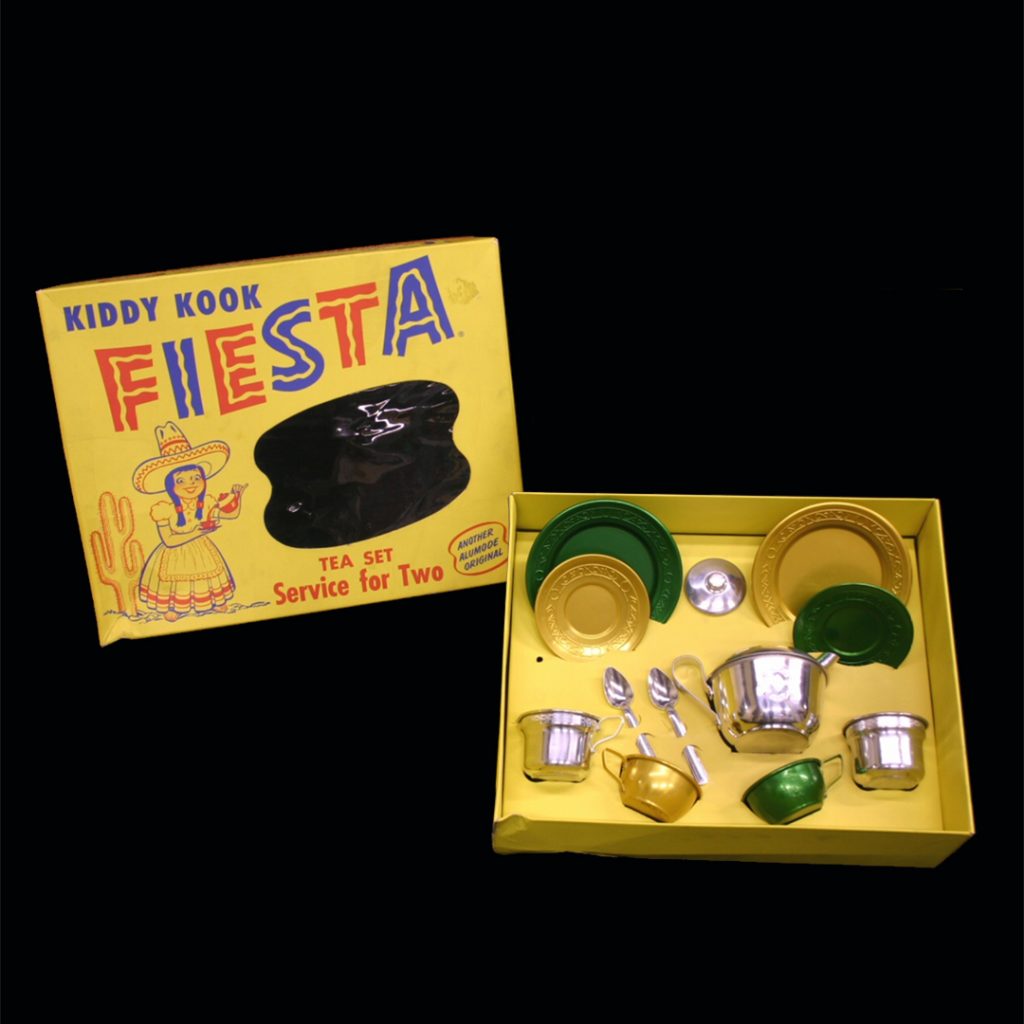
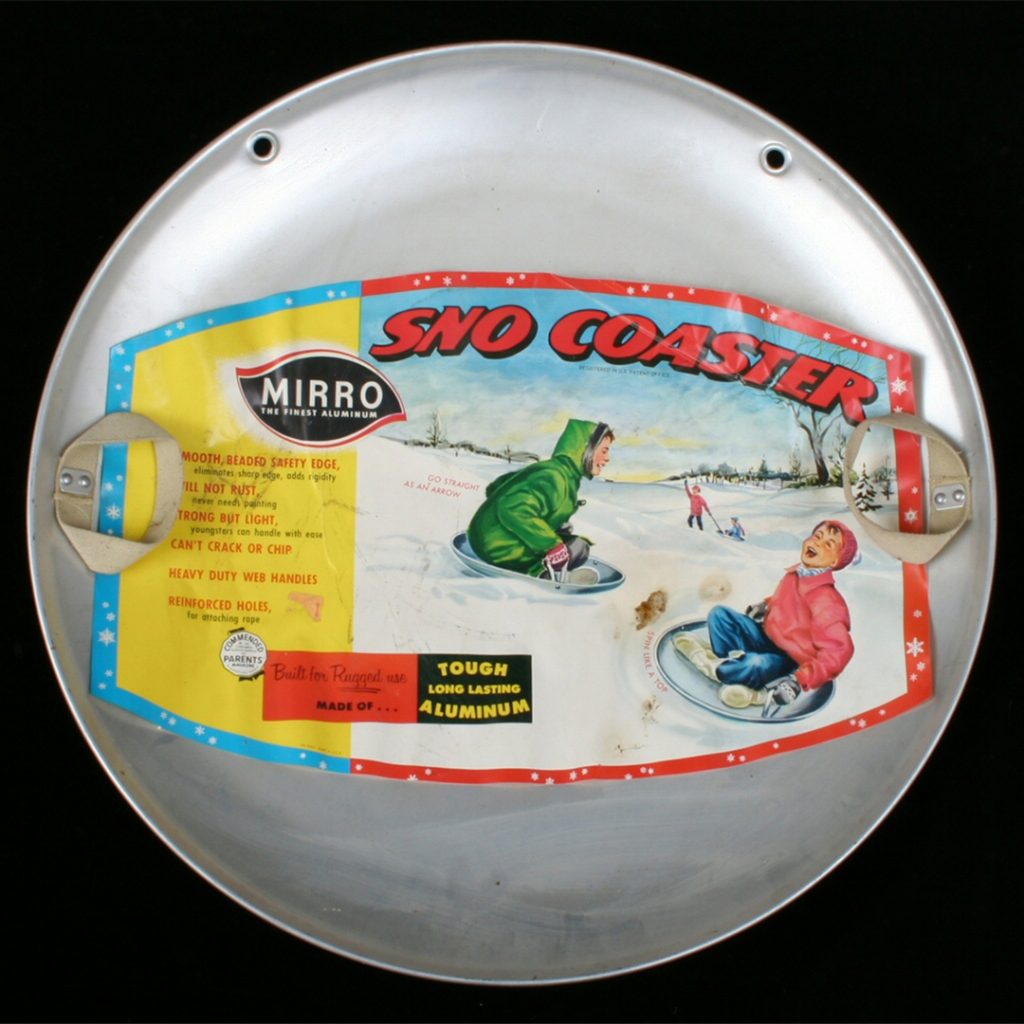
Innovation
Making a Good Idea Great
The Aluminum Specialty Company had been manufacturing aluminum holiday decorations for decades when they stumbled upon a new idea. In December of 1958, Aluminum Specialty toy sales manager Tom Gannon noticed a metal Christmas tree displayed in a Chicago Ben Franklin store. Modern Coatings Inc. of Chicago made the tree, but it was too expensive and bulky to be sold to a mass market. Gannon took the original tree back to Aluminum Specialty, and engineer Richard Thomsen led the effort to produce a better, cheaper version for the American Toy Fair in March of 1959. Thomsen’s team was successful, and the tree was well received by buyers. On a hunch, Aluminum Specialty produced hundreds of thousands of trees in time for the 1959 holiday season, and the gamble paid off as sales soared. In 1960, Aluminum Specialty branded their trees as Evergleams.

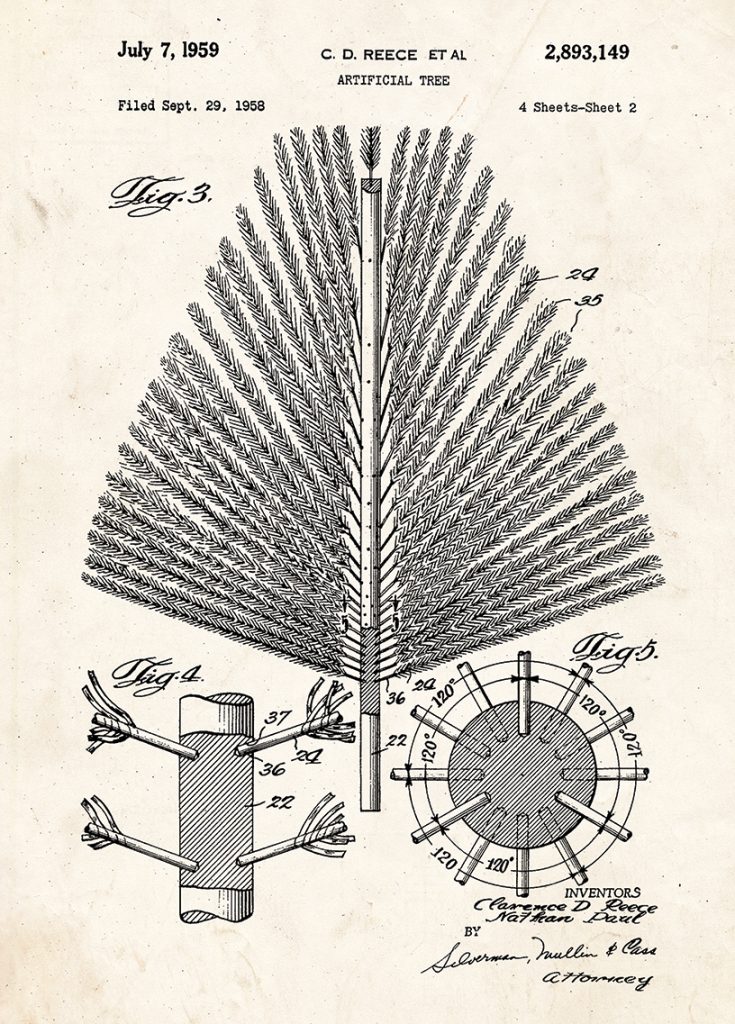
Modern Coatings had patented their tree trunk’s drill-hole angle, which allowed for branches of uniform length, as well as their easy-to-use paper sleeve that held the tree’s branches while it was in storage. Since Aluminum Specialty had greater aluminum manufacturing expertise and greater access to national markets than Modern Coatings, the two companies entered into a licensing agreement in the early 1960s.
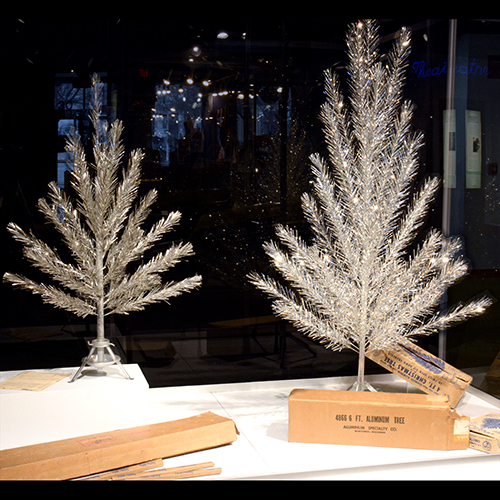
In the photograph above, on the left is the type of tree that inspired the Aluminum Specialty Company of Manitowoc to get into the aluminum Christmas tree business. Made by Modern Coatings, Inc. of Chicago, its sale price was a little too high for mass market success. On the right is a tree made by the Aluminum Specialty Company in 1959. It was more economically produced than the tree made by Modern Coatings, Inc. and sold for less. Note that it is not yet branded as an “Evergleam.” Private collection
Heyday
The Peak of the Evergleam
By the mid-1960s, sales for the Evergleam peaked. Nearly twenty other competitors began making aluminum Christmas trees, but due to innovative merchandising and Aluminum Specialty’s existing access to markets, the Evergleam brand was more popular than all the others combined. Most trees were purchased for the home, but others shone brightly in Main Street storefront windows across the country.
Why So Successful?
In a marketplace dominated by traditional holiday decorations, aluminum Christmas trees were an appealing novelty. They utilized new materials and had a clean, modern look. Aluminum Specialty never promoted their trees as “artificial.” They offered a simple, easy-to-use decoration that was strikingly different from its competition.
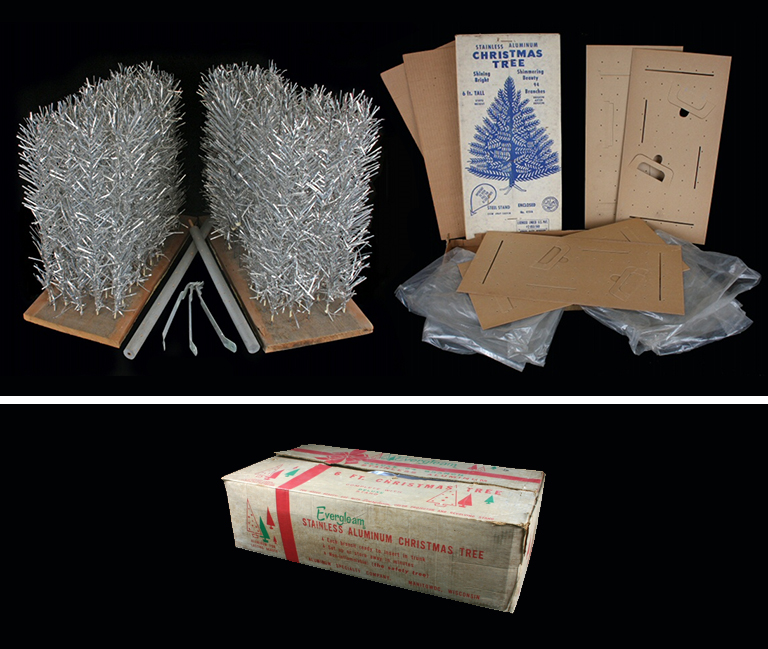
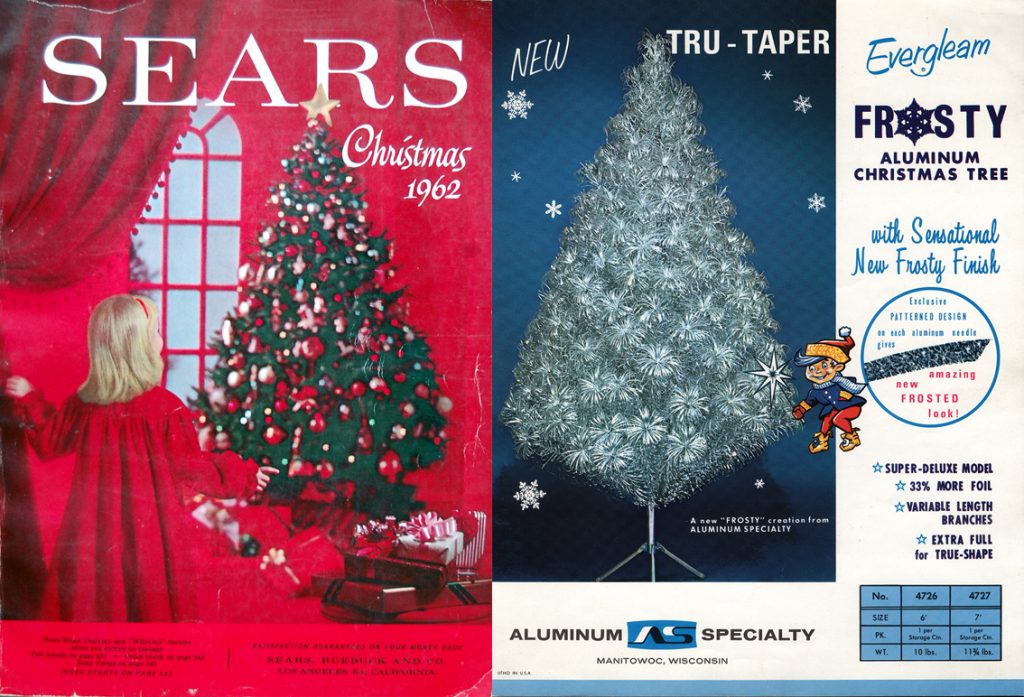
After a successful first year, production of Aluminum Specialty’s Evergleam trees took place year-round, sometimes requiring three shifts. Sales peaked in 1964–1965, and the Evergleam brand had a 60–65 percent market share in the United States and Canada throughout the 1960s. Primary outlets included regional stores and national chains such as Montgomery Ward, Ben Franklin, and Woolworth’s. Between 75 and 80 percent of all Evergleams were silver, with the remainder appearing in green, gold, and pink.
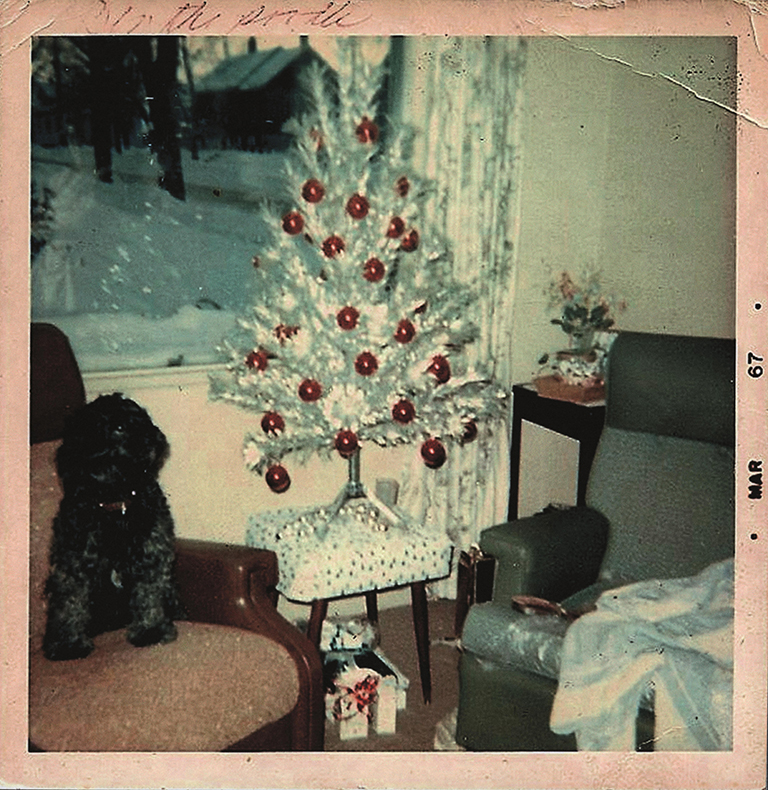
What Made Evergleams Popular?
Usability and Affordability
The simple and highly effective concepts of the paper sleeve branch holders and the drill-hole angles made the trees very easy to assemble and store. They were produced more cheaply and sold at a lower price point than the Modern Coatings trees, while maintaining the same visual effect.
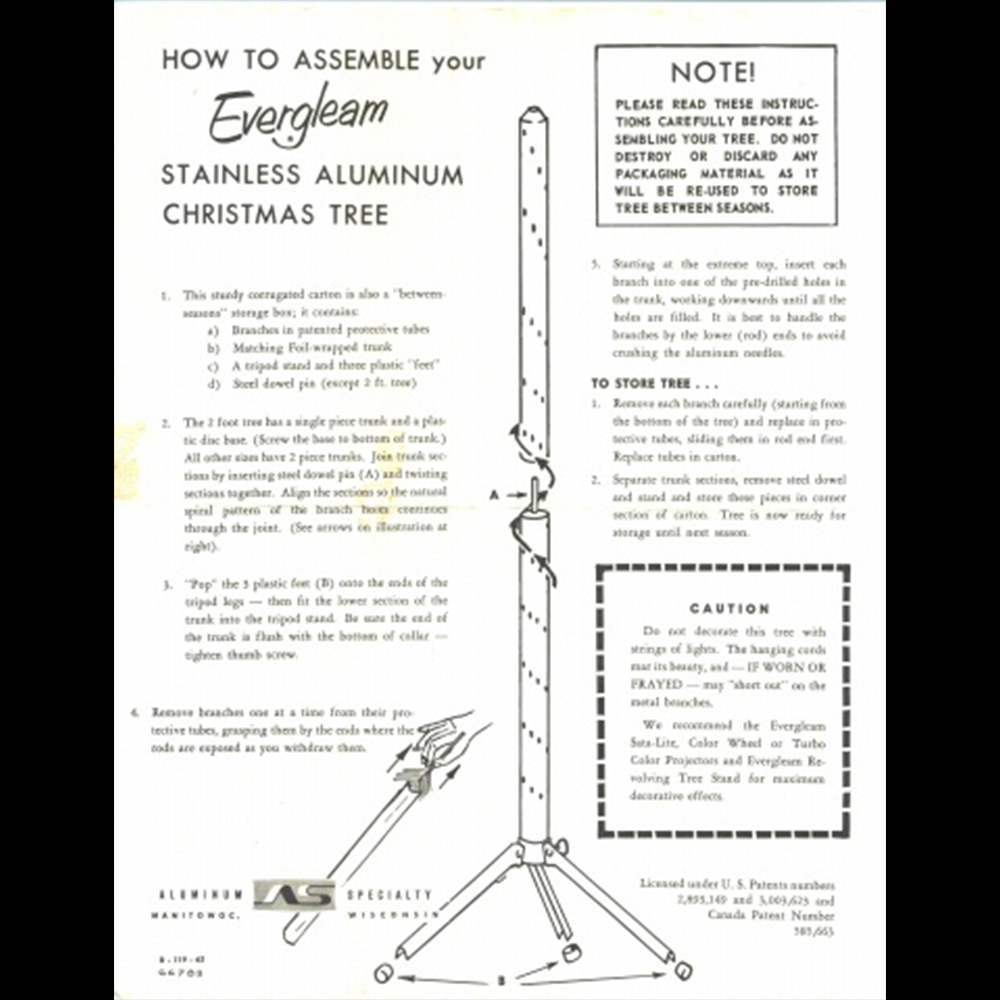
Originality
Jerry Waak, former vice president of Aluminum Specialty’s Toy Division, believes the Evergleam was successful because it was a novel addition to a crowded and traditional Christmas decoration marketplace.
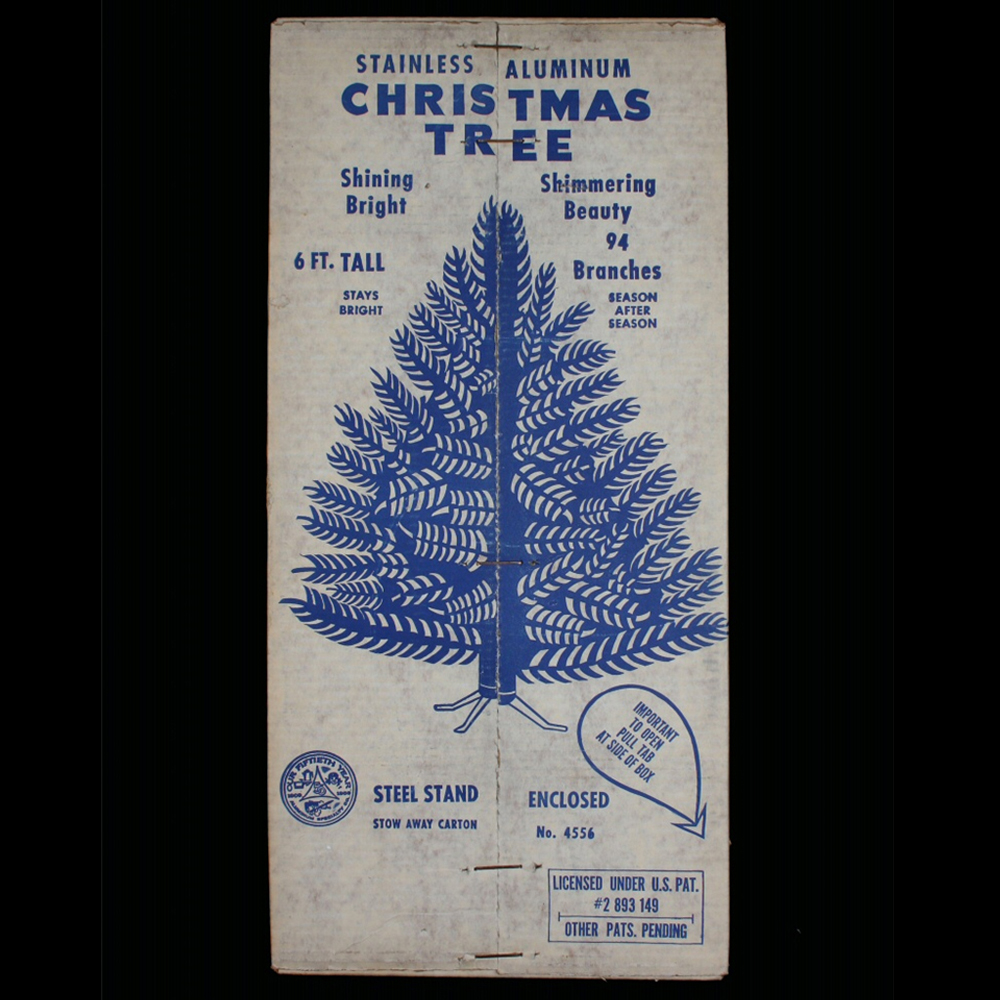
Access to market networks
By 1959, Aluminum Specialty had established market relationships and sales contracts from coast to coast. They were able to drop their shiny new product into a well-functioning sales network.
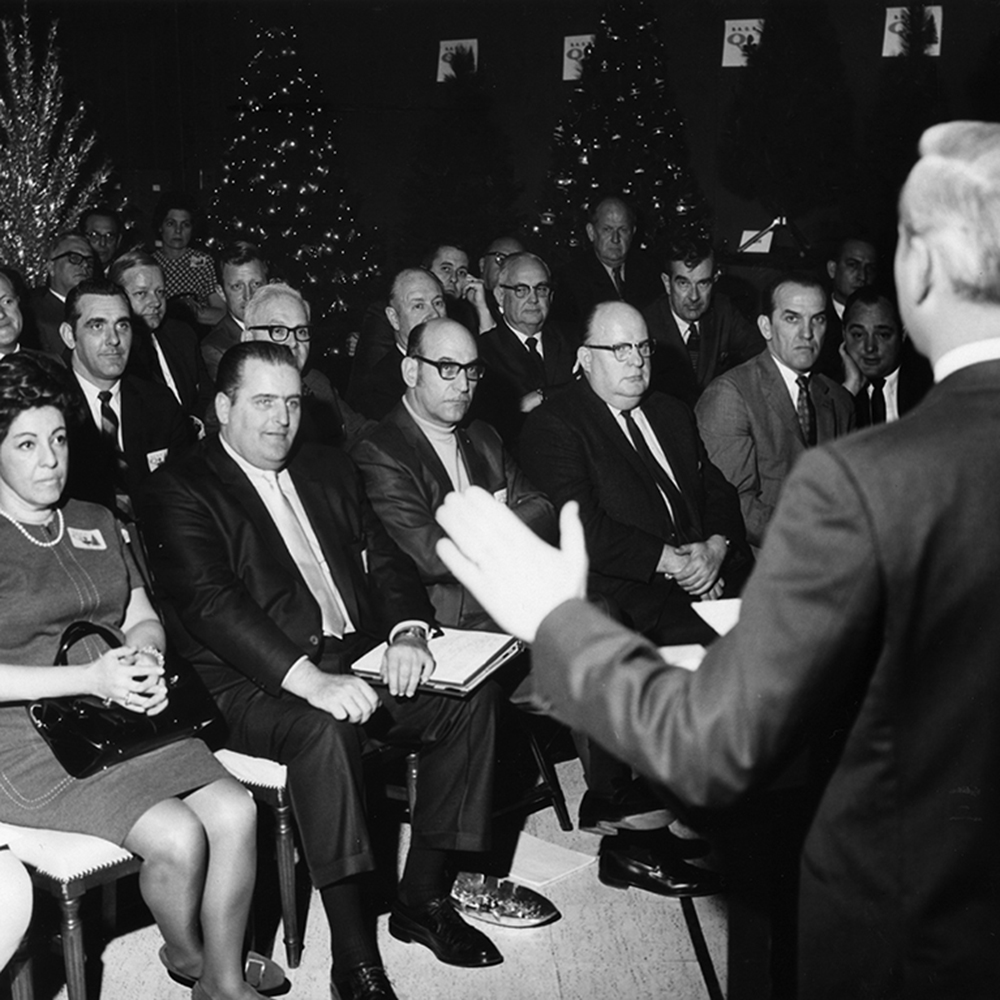
Consistency with contemporary consumer products aesthetics
The timing for an aluminum Christmas tree was right as modern, sleek, space-age designs exploded in popularity in the consumer culture of the late 1950s.
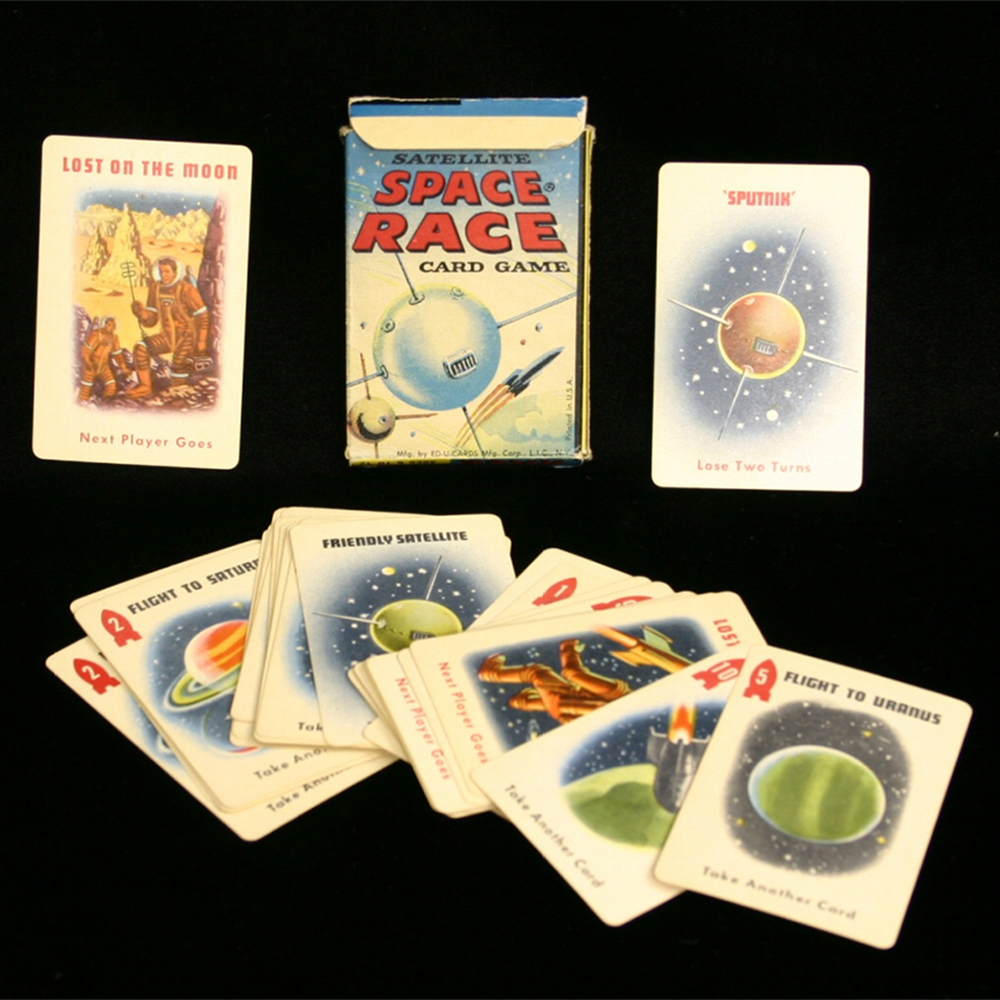
Product innovation
The company quickly developed new styles and accessories to enhance the Evergleam, and they continued to do so throughout the 1960s.
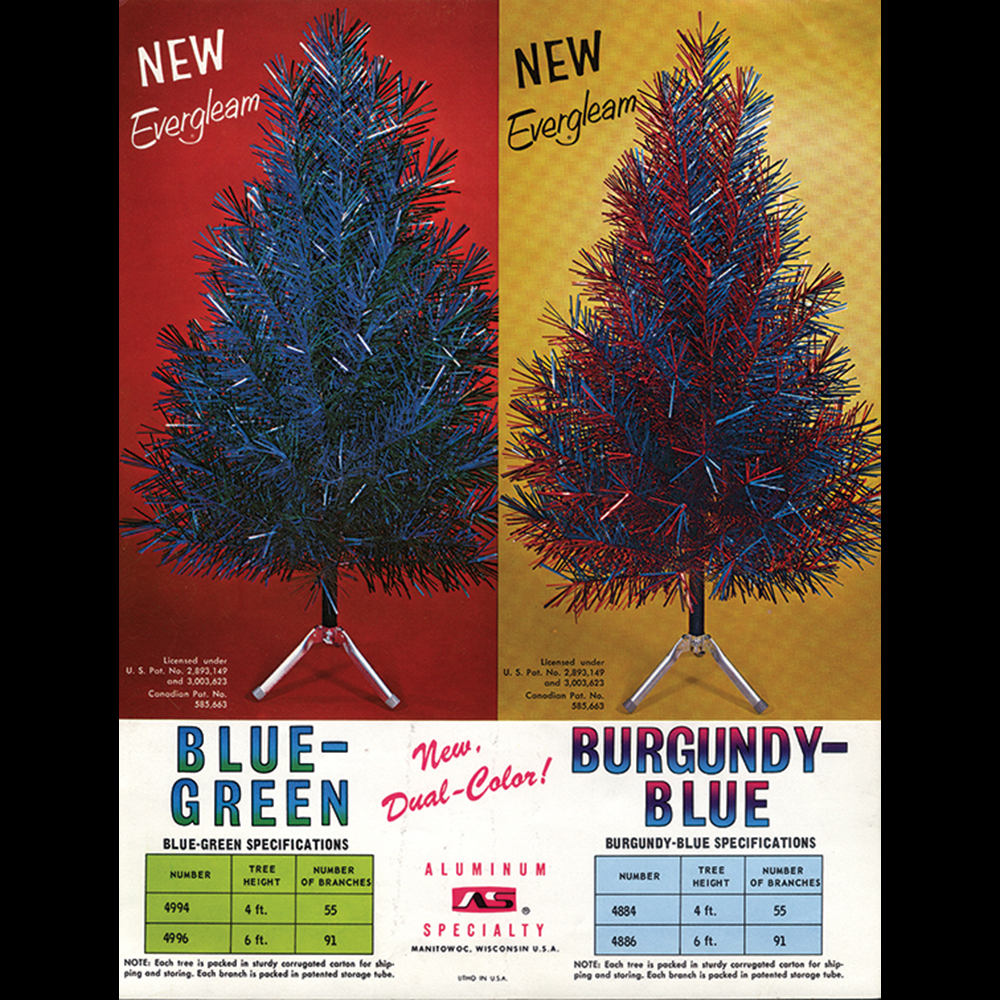
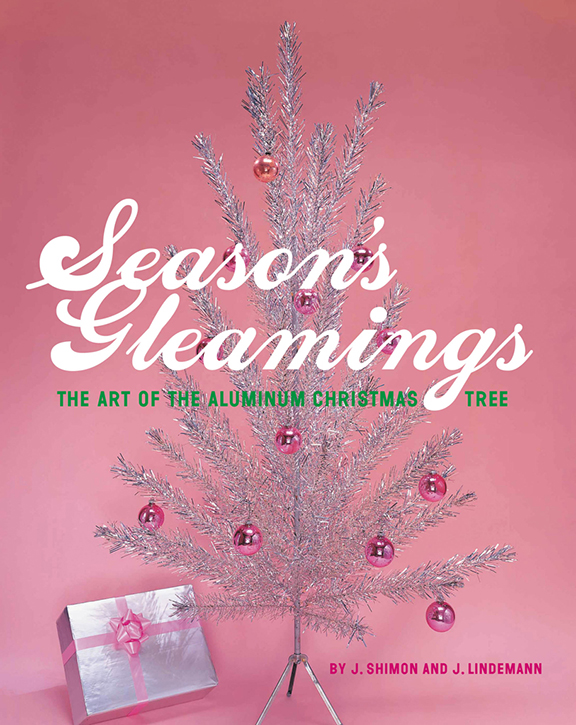
by J. Shimon and J. Lindemann, 2004.
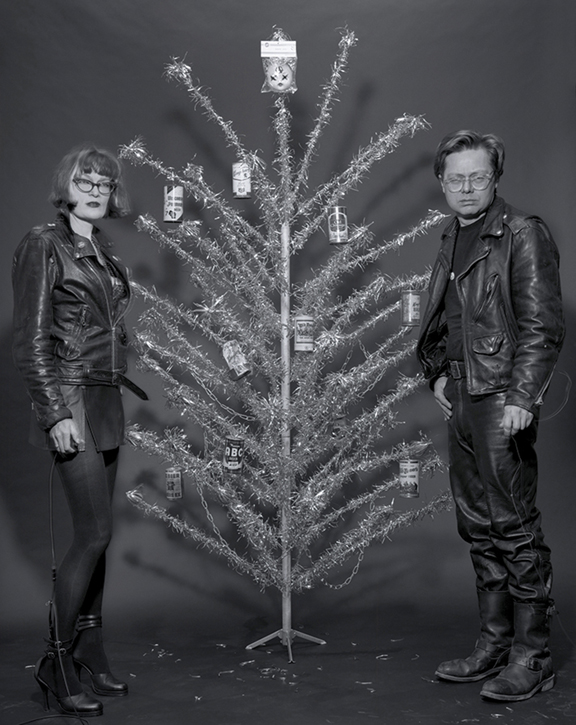
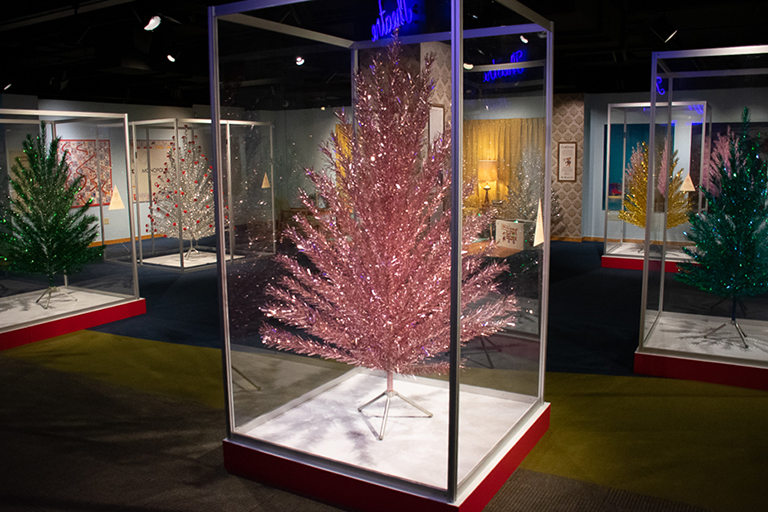
Why Have Aluminum Christmas Trees Endured?
Volume of production
Millions of trees were produced in the late 1950s, 1960s, and early 1970s. Therefore, a large number have survived.
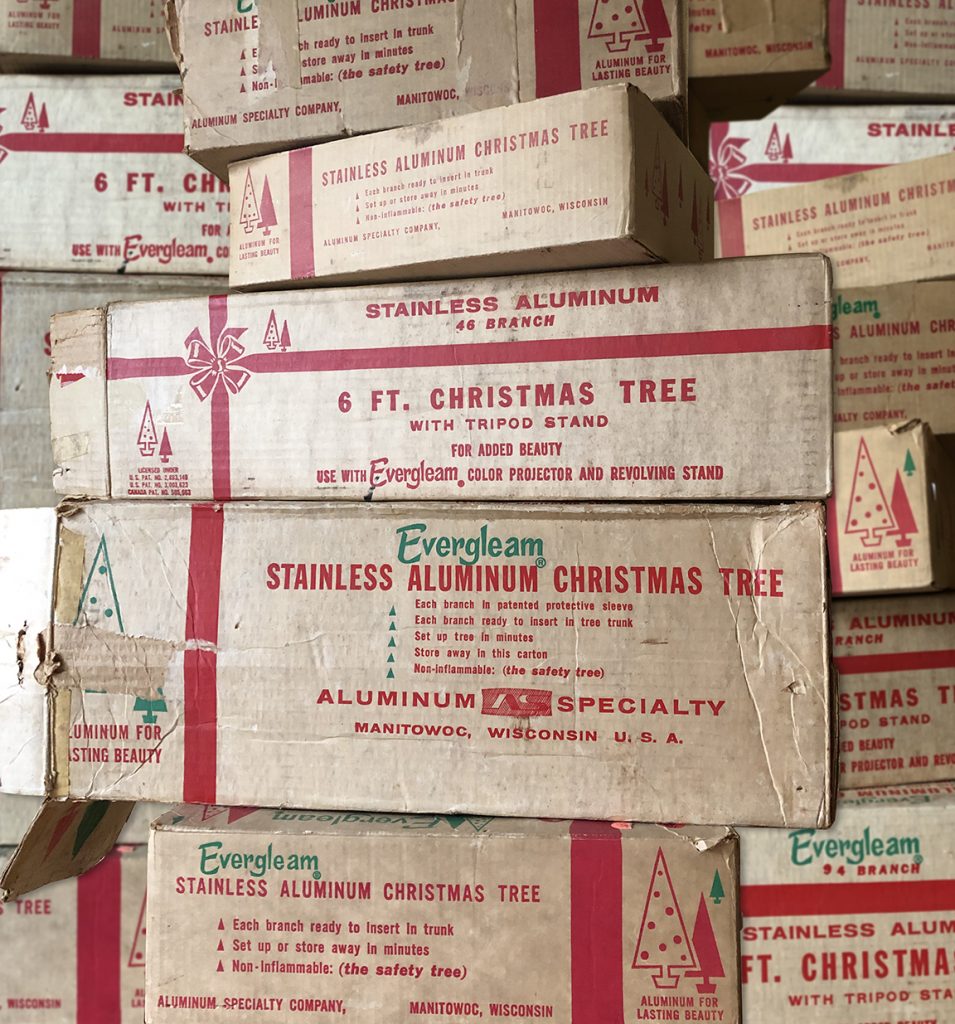
Renewed appeal of the mid-century aesthetic
Since the early 2000s, mid-century modern antiques have enjoyed extreme popularity among collectors and enthusiasts, and the appeal does not appear to be waning.

Easy and effective storage
The Evergleams’ easy-to-use paper sleeves allowed owners to keep their trees’ branches protected. While many boxes have become damaged over the years, the branches inside are usually in good shape.
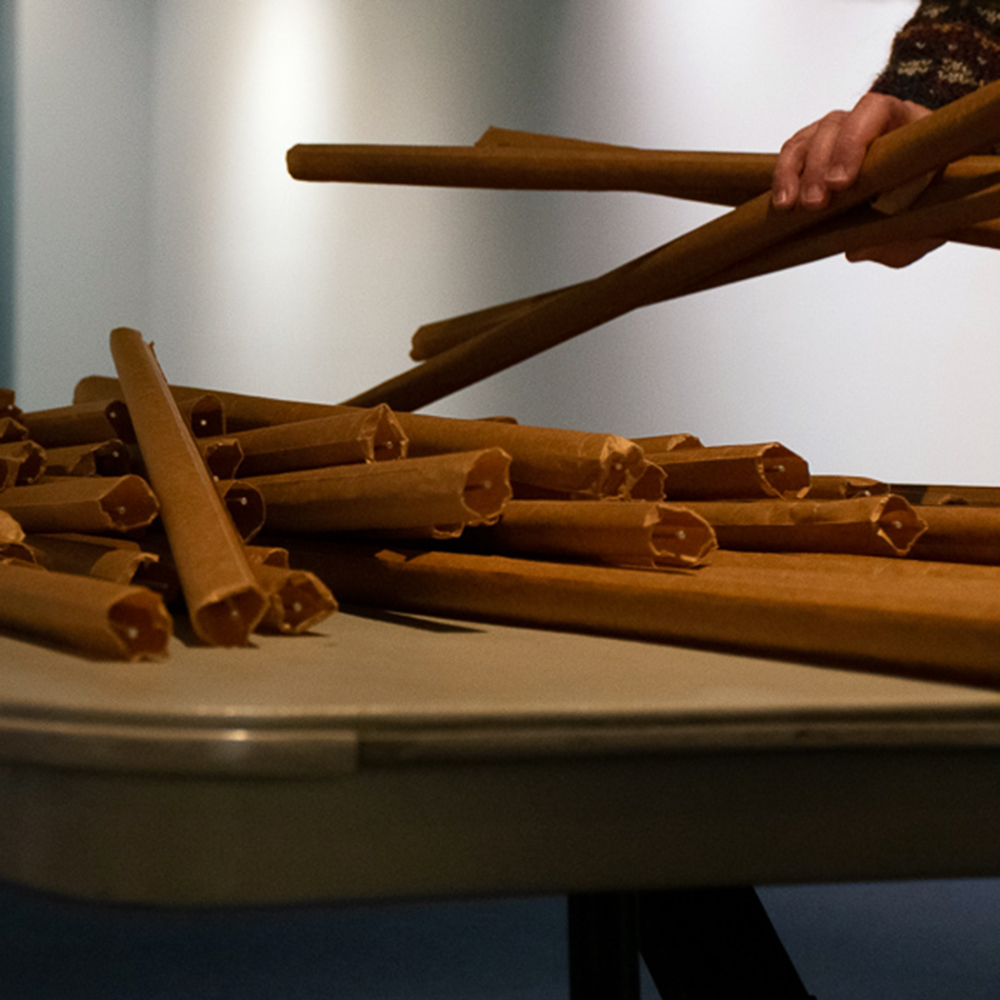
Online community and marketplace
The general public’s increased ability to share images and content online has connected aluminum tree enthusiasts from around the country. Evergleams are a perfect fit for the Instagram age. Almost all sales of aluminum trees are now done online, primarily through eBay.
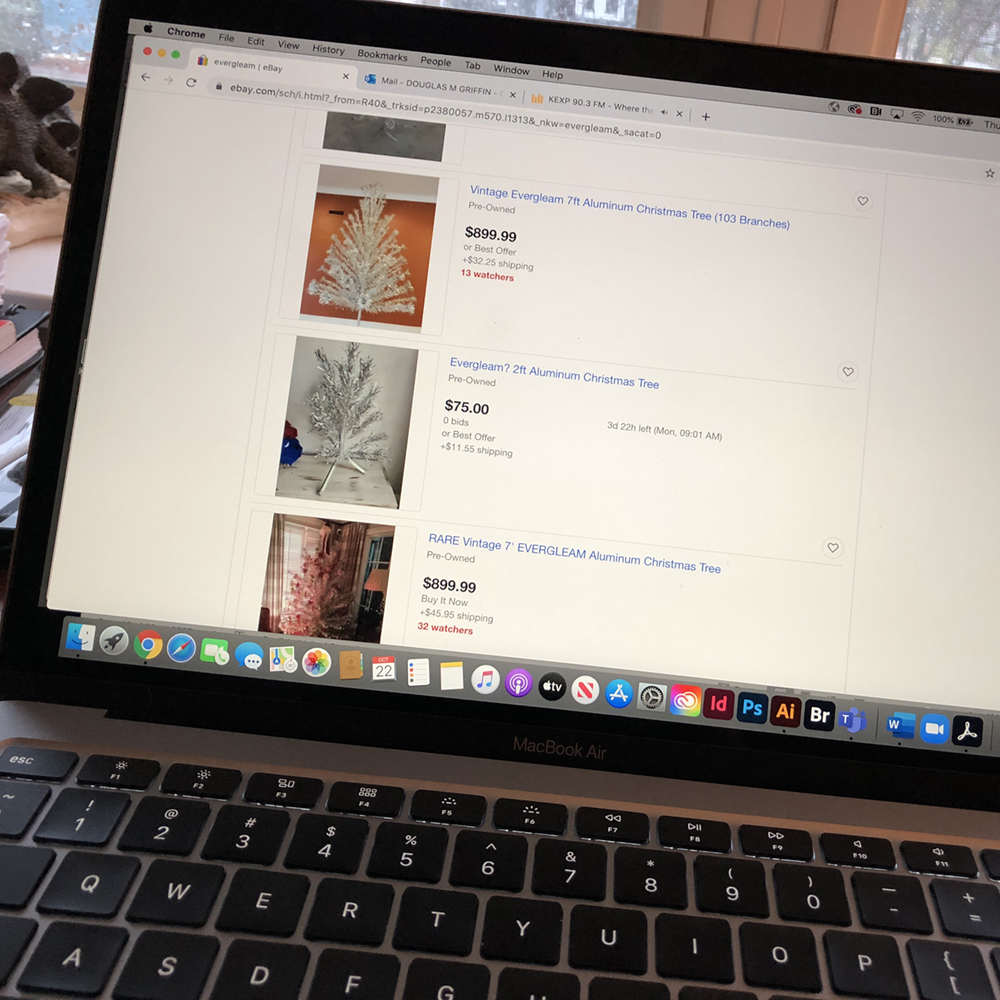
Originality
Shiny aluminum trees are still a novel product in a crowded and traditional Christmas decoration marketplace.
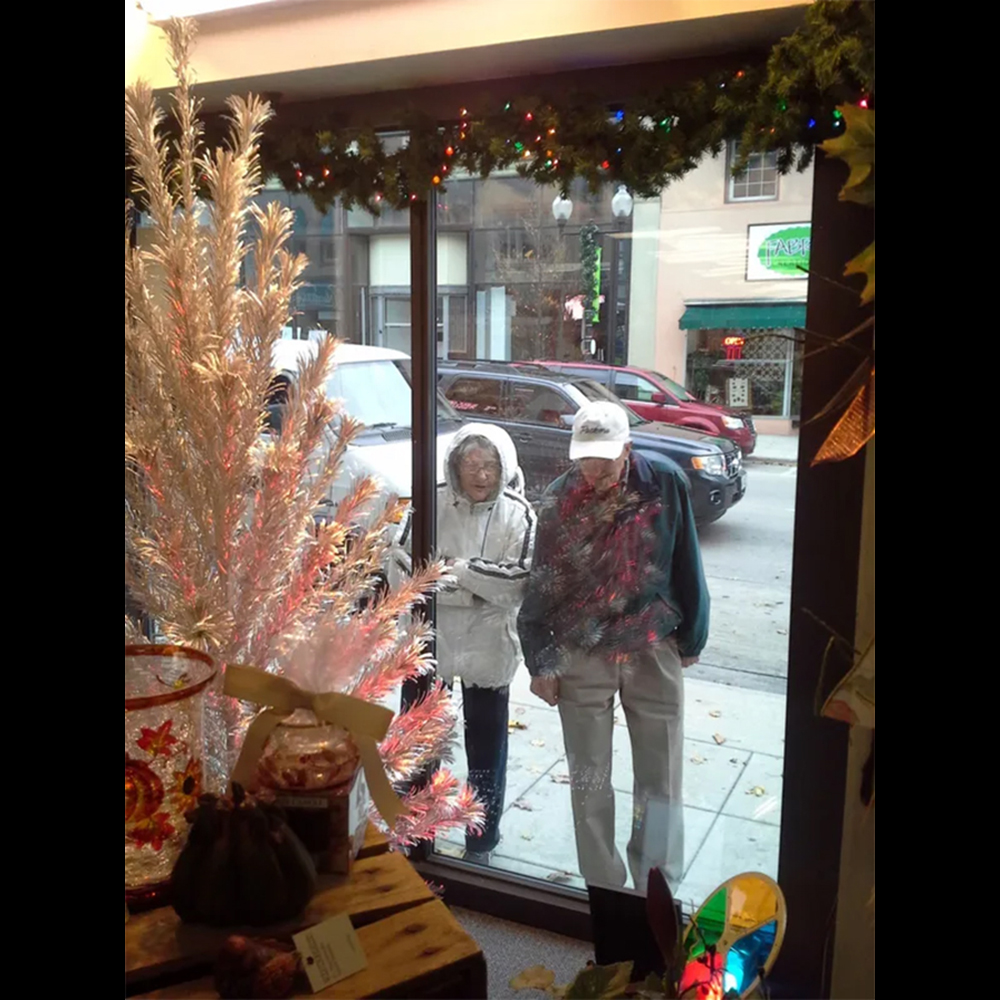
Why do we collect and preserve Evergleams as part of the Wisconsin story?
Longstanding Wisconsin company
Aluminum Specialty Company lasted nearly one hundred years and sold many millions of products across the country.
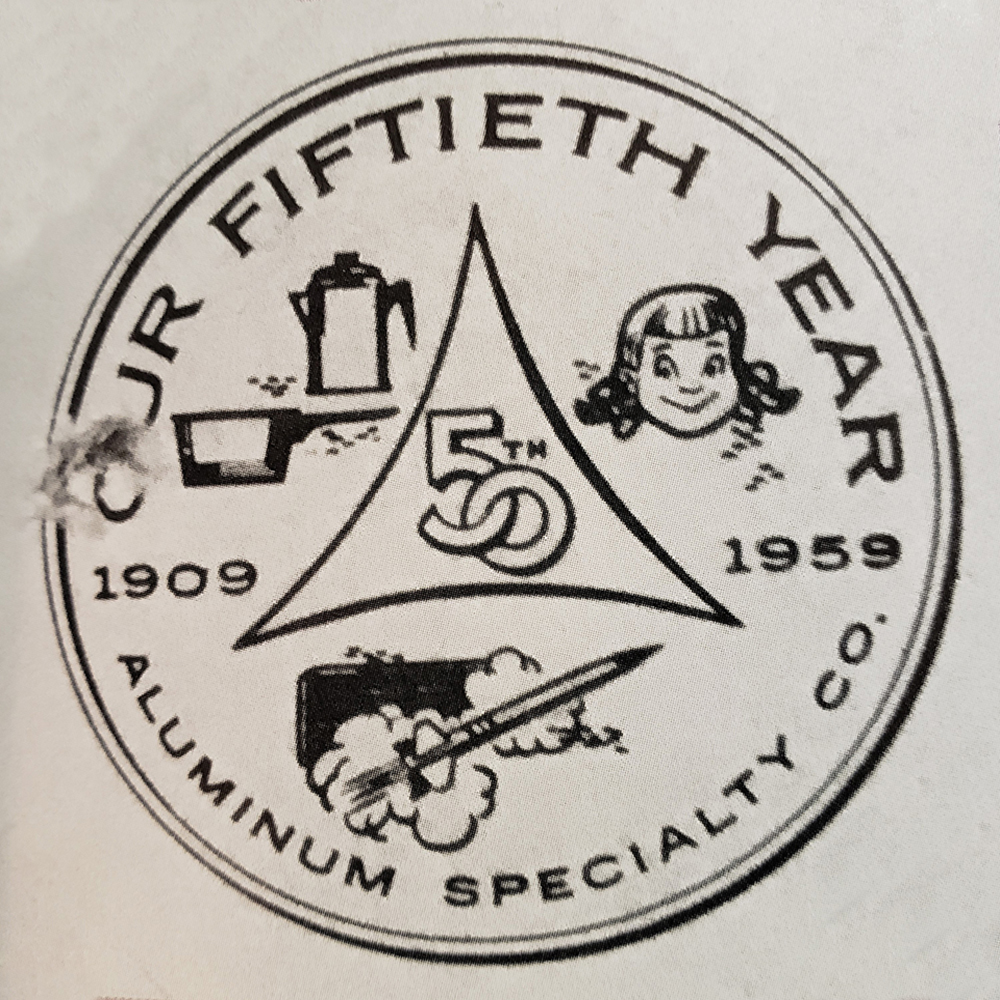
National Christmas tree on the National Mall in Washington, D.C., 1997. (Courtesy of the Library of Congress)
Almost all of the aluminum factories and warehouses are now gone. As far as we know, no collections of company records or archives remain, even with the descendants of owners and employees.
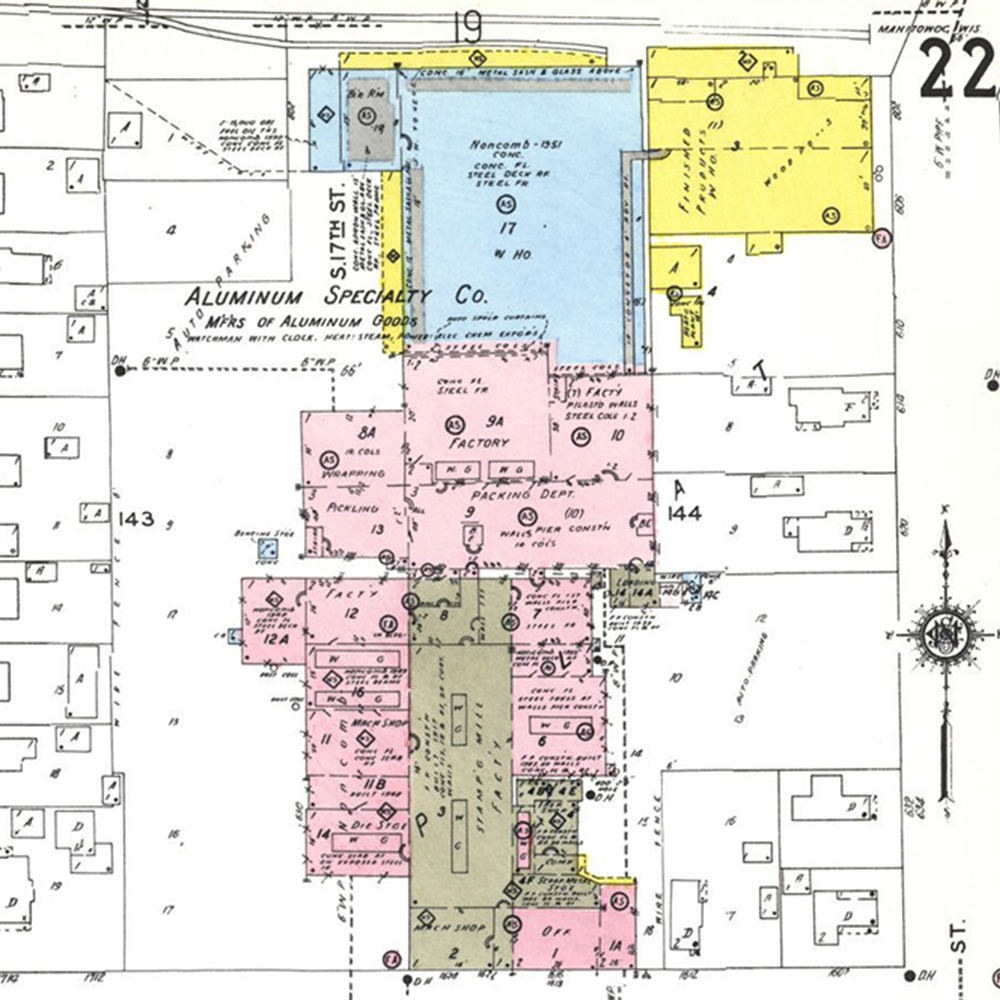
Regional history and identity
Metal goods companies such as Aluminum Specialty, Mirro, and West Bend employed generations of Wisconsinites, and their facilities once dominated landscapes of the area.
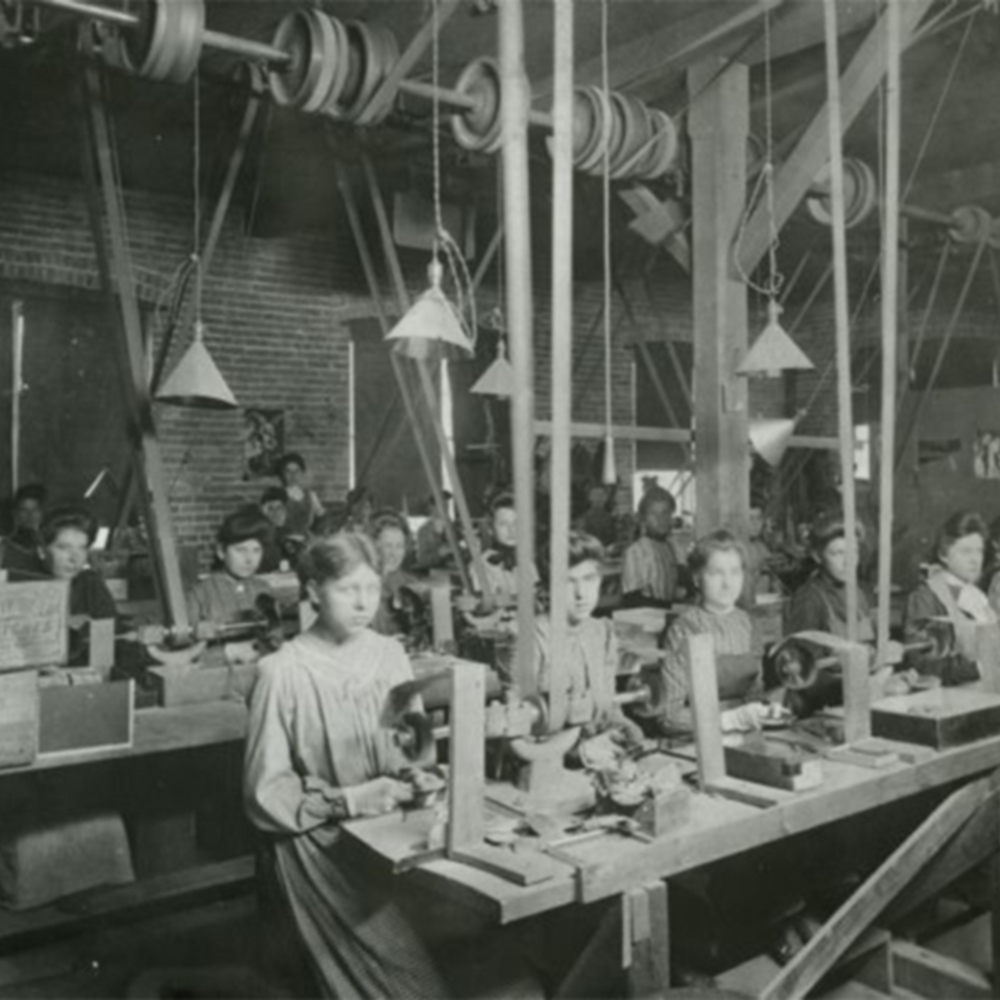
Visual appeal matters
In the museum field, visual appeal is crucial to attracting and retaining the interest of audiences. Aluminum trees are bright, shiny objects, and people are naturally attracted to them.
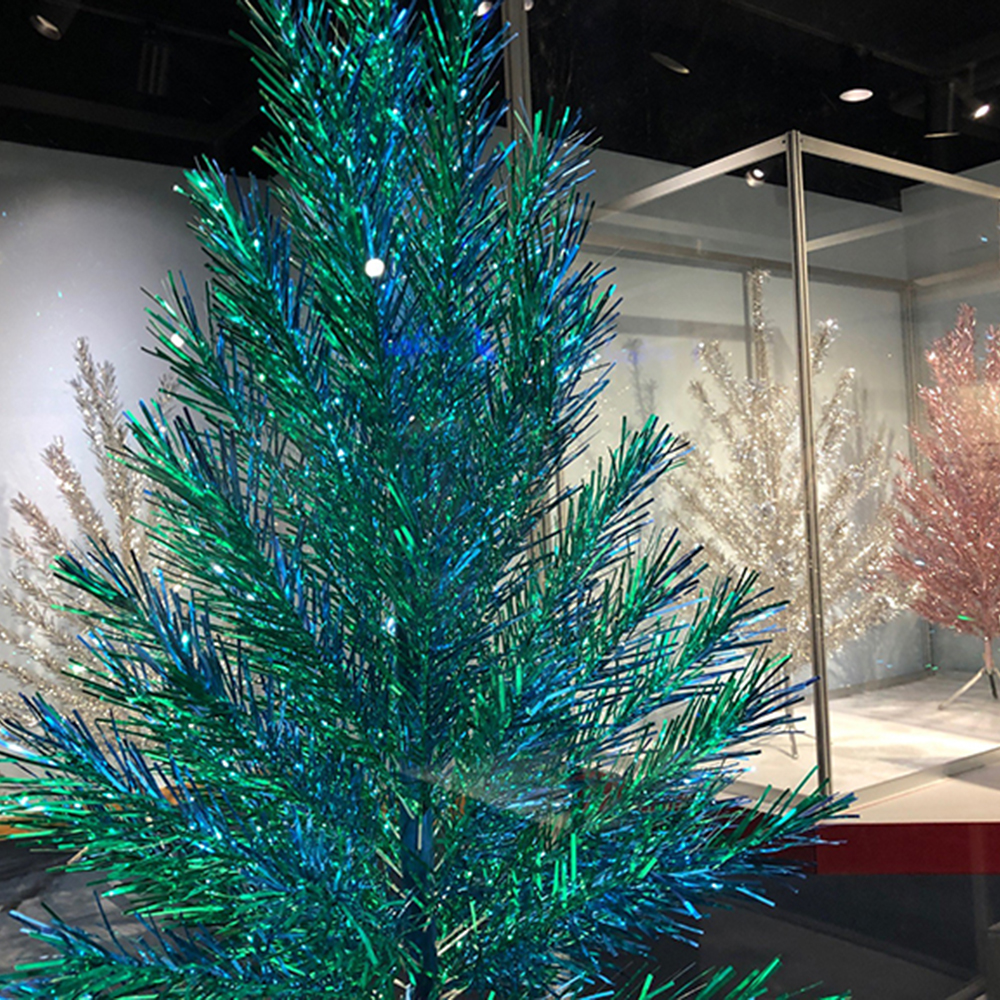
Broad appeal
Evergleams are part of the most popular holiday in the world. For those who celebrate Christmas, trees are an important element of the season.

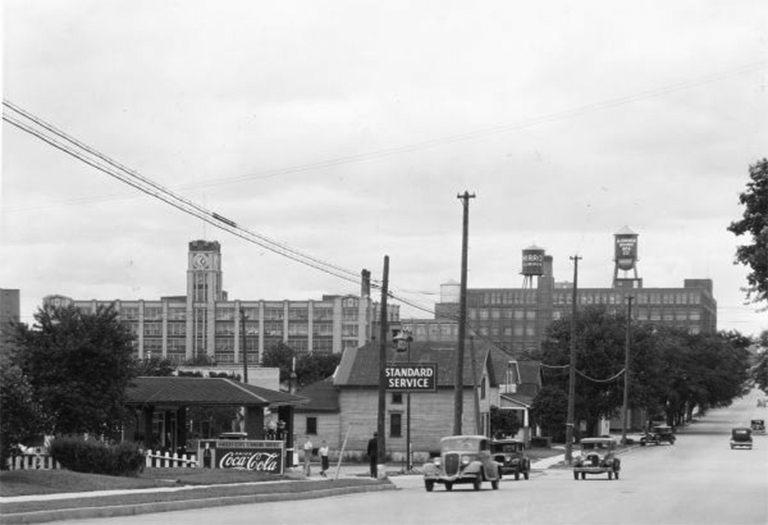
What else was made by Wisconsin’s aluminum industry?
For many decades, the story of American aluminum production centered around Manitowoc, Wisconsin. Aluminum Specialty Company was actually the smaller of the two massive aluminum product companies in Manitowoc; the other was Mirro Aluminum Company, which was at one time the world’s largest maker of aluminum goods. Each company lasted nearly one hundred years and made a wide variety of products for many different markets.
Why do we collect and preserve Evergleams as part of the Wisconsin story?
Millions of domestic goods
Manitowoc’s aluminum manufacturers produced quality kitchen and house goods at very affordable prices, making them accessible to many millions of Americans in the 1900s.
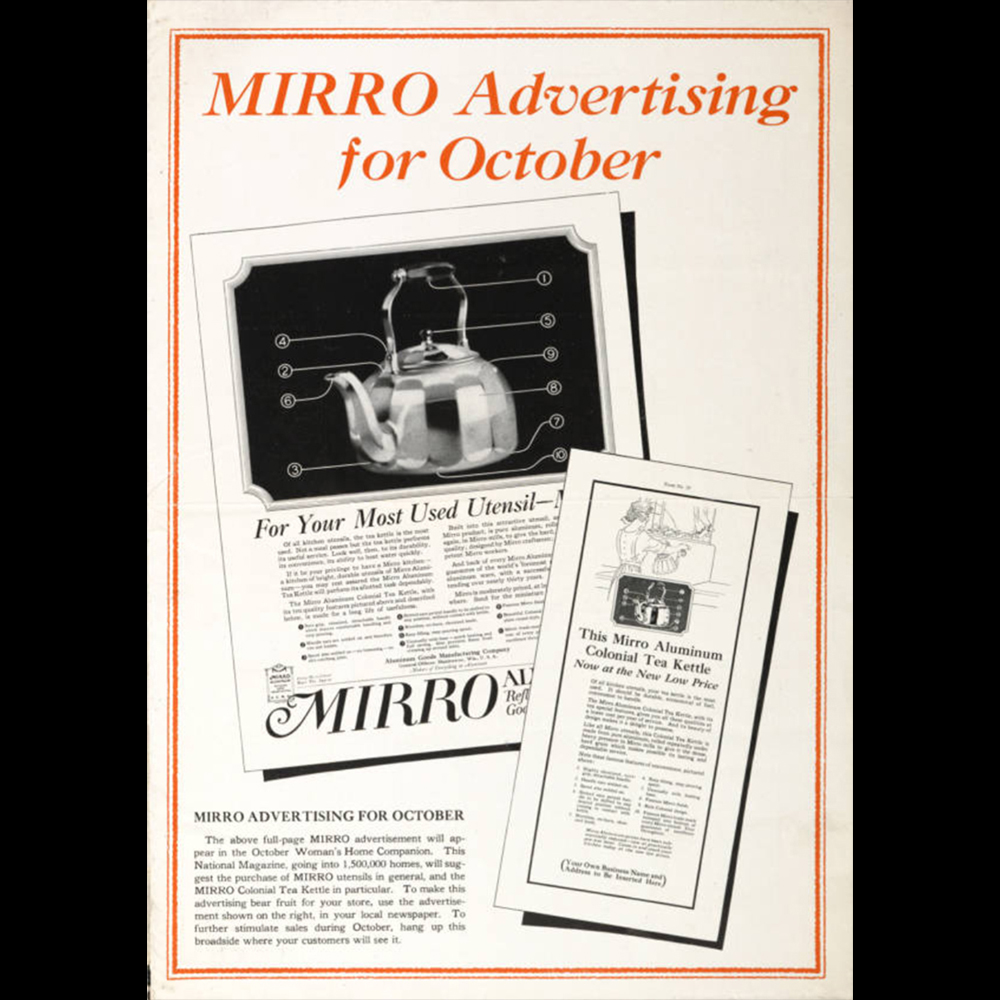
Lots of toys, too
Both Aluminum Specialty and Mirro had major divisions of their companies dedicated to toys and decorations such as sleds, scooters, and Christmas tree ornaments. Aluminum toys have been enjoyed by many millions of children, especially members of the Baby Boomer generation.
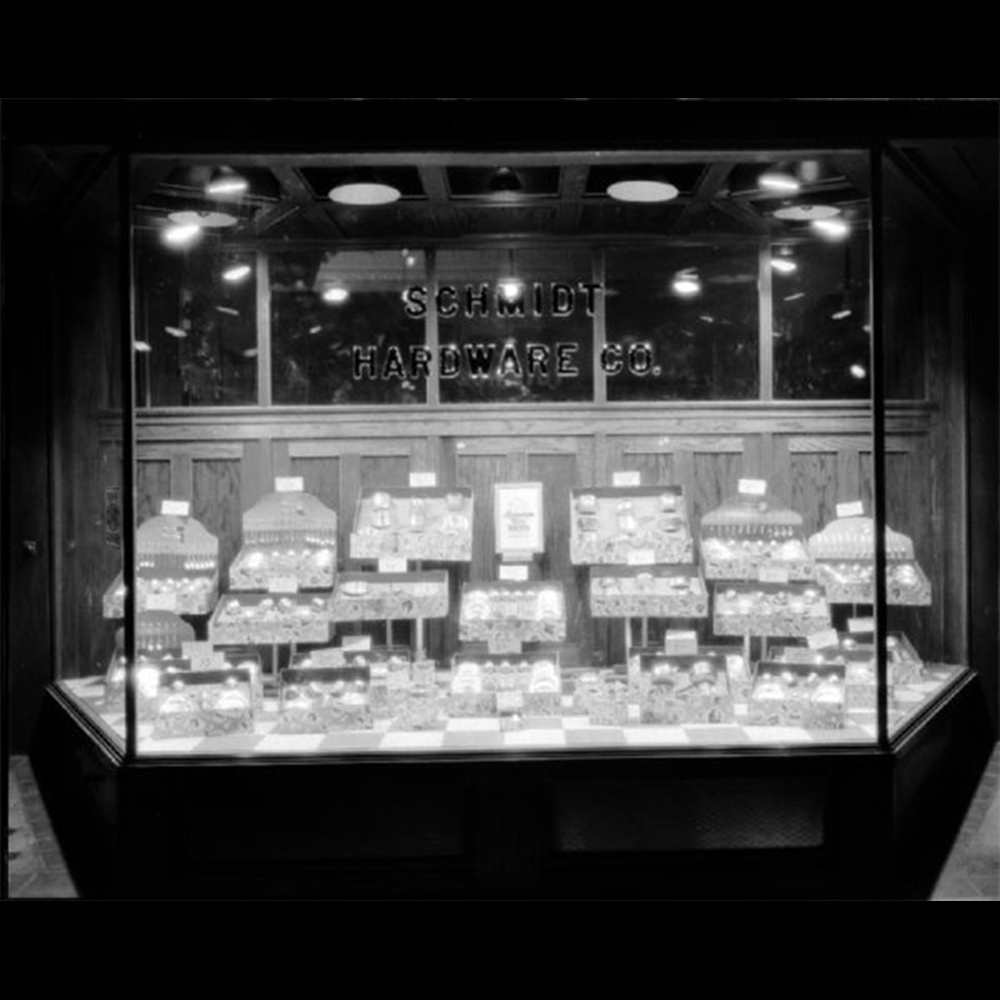
Evergleam Christmas Tree
Following the success of the Evergleam Christmas tree, the Aluminum Specialty Company of Manitowoc, Wisconsin, continuously introduced new types of trees and developed a number of accessories. Explore the various products in this gallery.
